JMU BIO 357 Exam 3
1/58
There's no tags or description
Looks like no tags are added yet.
Name | Mastery | Learn | Test | Matching | Spaced |
|---|
No study sessions yet.
59 Terms
- well-suited to long-distance dispersal
- typically need less food and water than mammals.
- water needs are met by the vegetation
- capable of fasting for long periods of time.
- more salt tolerant that mammals, most have salt excreting
glands.
Reptiles in the Galapagos (5)
22 species (20 endemic)
Number of reptile species within Galapagos
Giant Tortoise - Chelonoidis
- first colonized San Cristobal
- Originally 250,000. Now 15,000
- can measure up to 150cm over curve of shell.
- can weight up to 250kg
- sit in water to cool and avoid mosquitoes, ticks, and mites.
- stick out limbs for birds to eat insects on them.
- Hawks are predators of young
Giant Tortoise (7 facts)
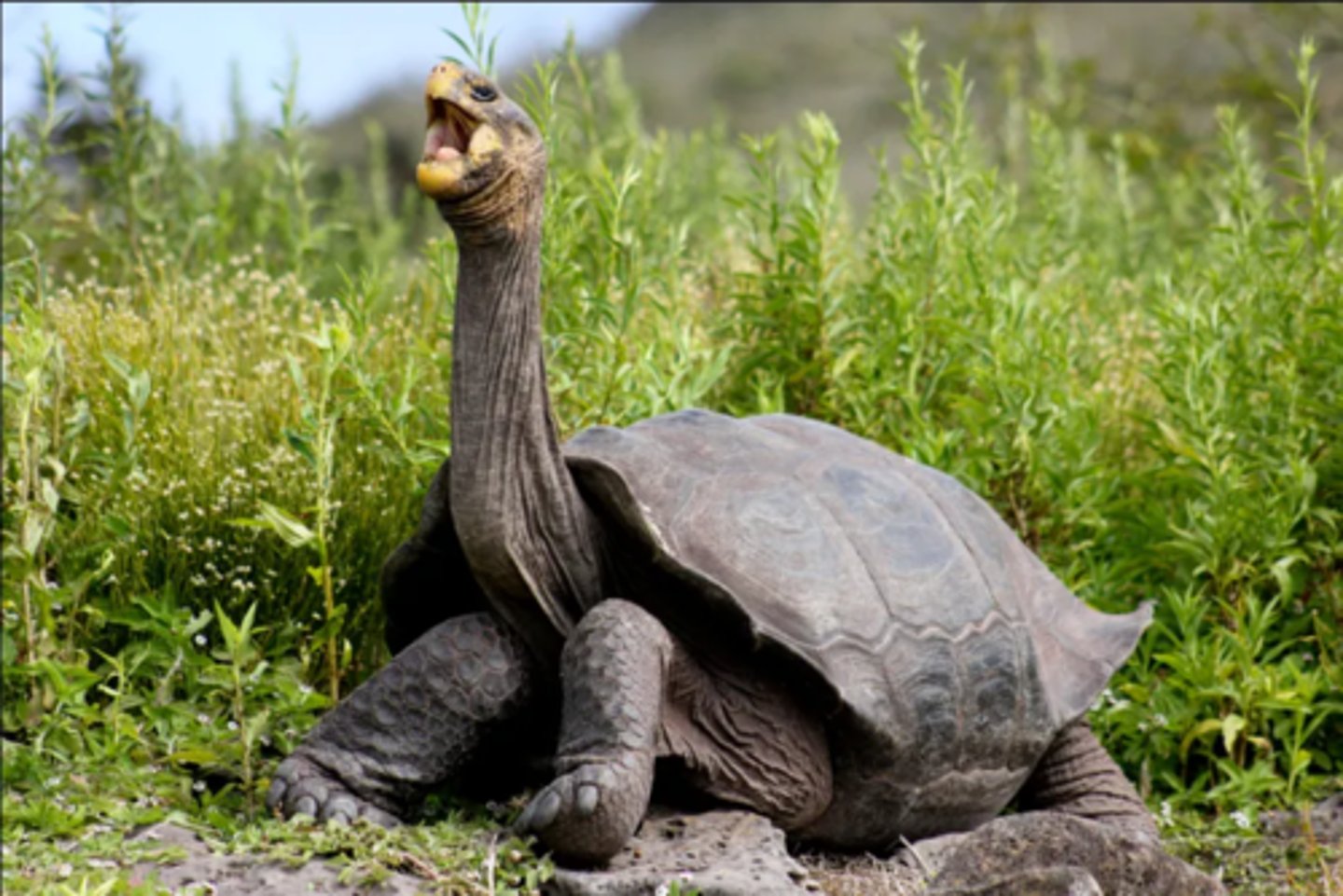
The hard upper shell of a tortoise
- main distinction between islands (skin color lesser)
Carapaces
poison apple (Hippomane), Psidium galapageum, Azolla, Tillandsia, and Opuntia
Giant Tortoise (Chelonoidis) Diet
- sexually active 20-25yrs.
- breed at end of warm season.
- stick necks out in territorial fights.
- males have concave shaped plastron which lets it mount females
- 2-16 pool ball sized eggs laid btw June-December in sandy dry soil 30m deep. mud and urine placed over nest.
- Young born 120-140 days later btw December-April
Giant Tortoise (Chelonoidis) Reproduction (6)
- saddle shaped
- located on Espanola
Small turtle shells
- dome shaped
- located on Santa Cruz & San Cristobal
Large turtle shells
Marine turtles - Chelonia mydas agaggisi (Pacific green turtle)
- only resident marine turtle
- weigh up to 150kg, usually 50-100kg
- vary in color (black and green, sometimes orange & yellow)
Marine Turtles (3 facts)
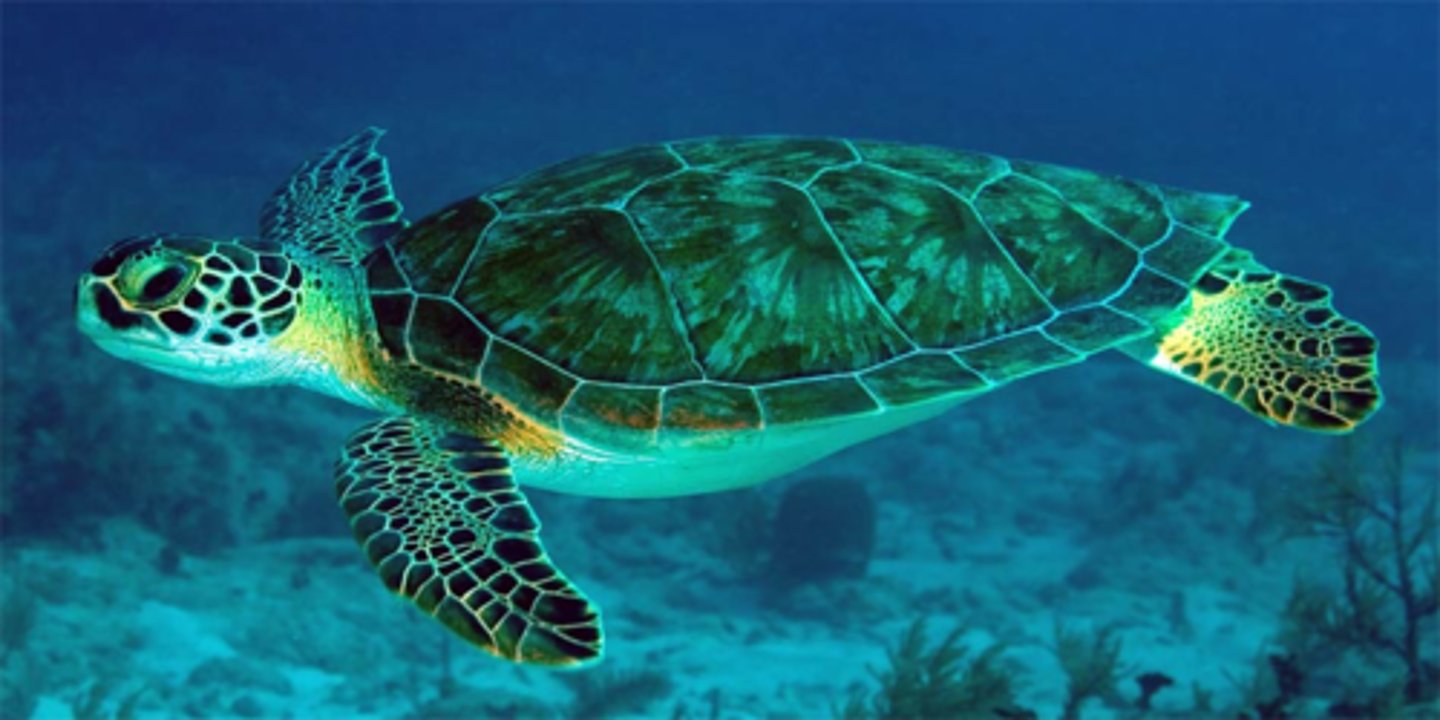
Sargrassum (brown algae) and Ova
Marine turtles (Chelonia mydas agaggisi) Diet
- mating season November - January
- females larger, swim during copulation, male uses flippers to hang on
- lay 70-80 eggs in sandy beaches per trip (up to 8 trips)
- female digs nests with rear flippers
- nesting period December - June
- hatchling predators: ghost crab, species of beetle, introdced pigs & rats
- usually emerge at night, can be eaten by ghost crabs, hawks, mockingbirds, and frigatebirds during day
Marine turtles (Chelonia mydas agaggisi) Reproduction (7)
C. darwini - Santiago
C. porteri - Santa Cruz
C. chathamensis - San Cristobal
C. hoodensis - Espanola
C. duncanensis - Pinzon
C. becki - Isabela (Wolf)
C. vicina - Isabela (Darwin, Alcedo, Sierra Negra, Cerro Azul)
Existing (extant) tortoise species (7)
C. nigra - Floreana (common in 1800's, extinct around 1900)
C. wallacei - Rabida
C. phantasticus - Fernandina (one ever found, killed by Cali Academy of Science)
C. abindonii - Pinta (last member "Lonesome George", died at CDRC on 6/24/2012)
Undescribed - Santa Fé - only skeletal remains are known for the species.
Extinct (or possibly extinct) tortoise species (5)
Snakes - Philodryas and Alsophis (2 species)
- endemic
- both have 2-3 subspecies
- all constrictors, may be mildly venomous
- max 1m in length
- brown with yellow stripes or spots
- not found on northern chain of islands
- Prey: lava lizards, geckos, young marine iguana, rats, grasshoppers
- Predators: hawks and cats
Snakes (8 facts)
- 1 Diet/Prey
- 2 Size/Color
- 1 Location
- 1 Predators
- 3 Other
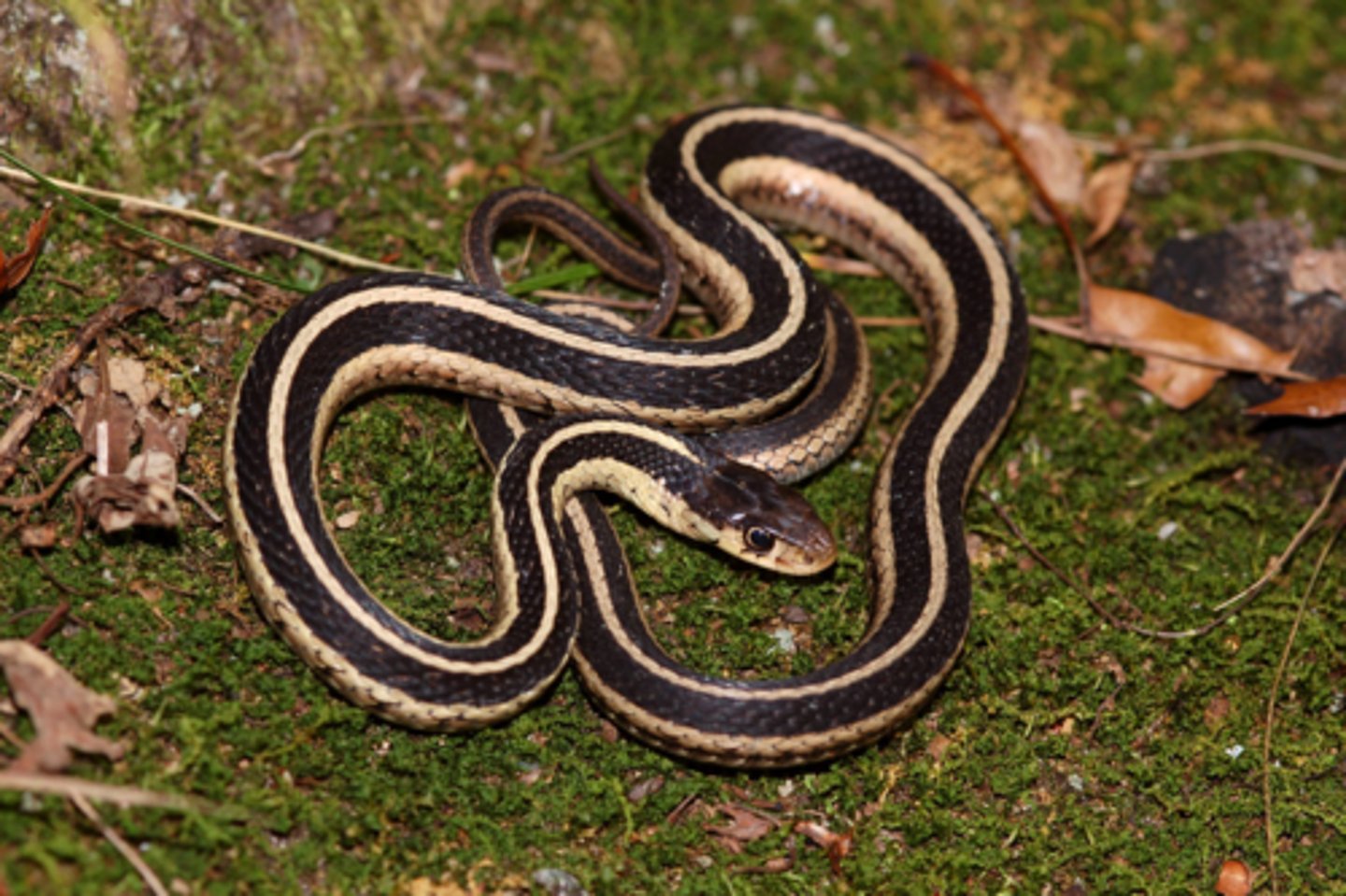
Geckos (Phyllodactylus)
- 6 species, 5 endemic
- most common genus of gecko
- 3 other species with 3 genera recently introduced
Geckos (3 facts)
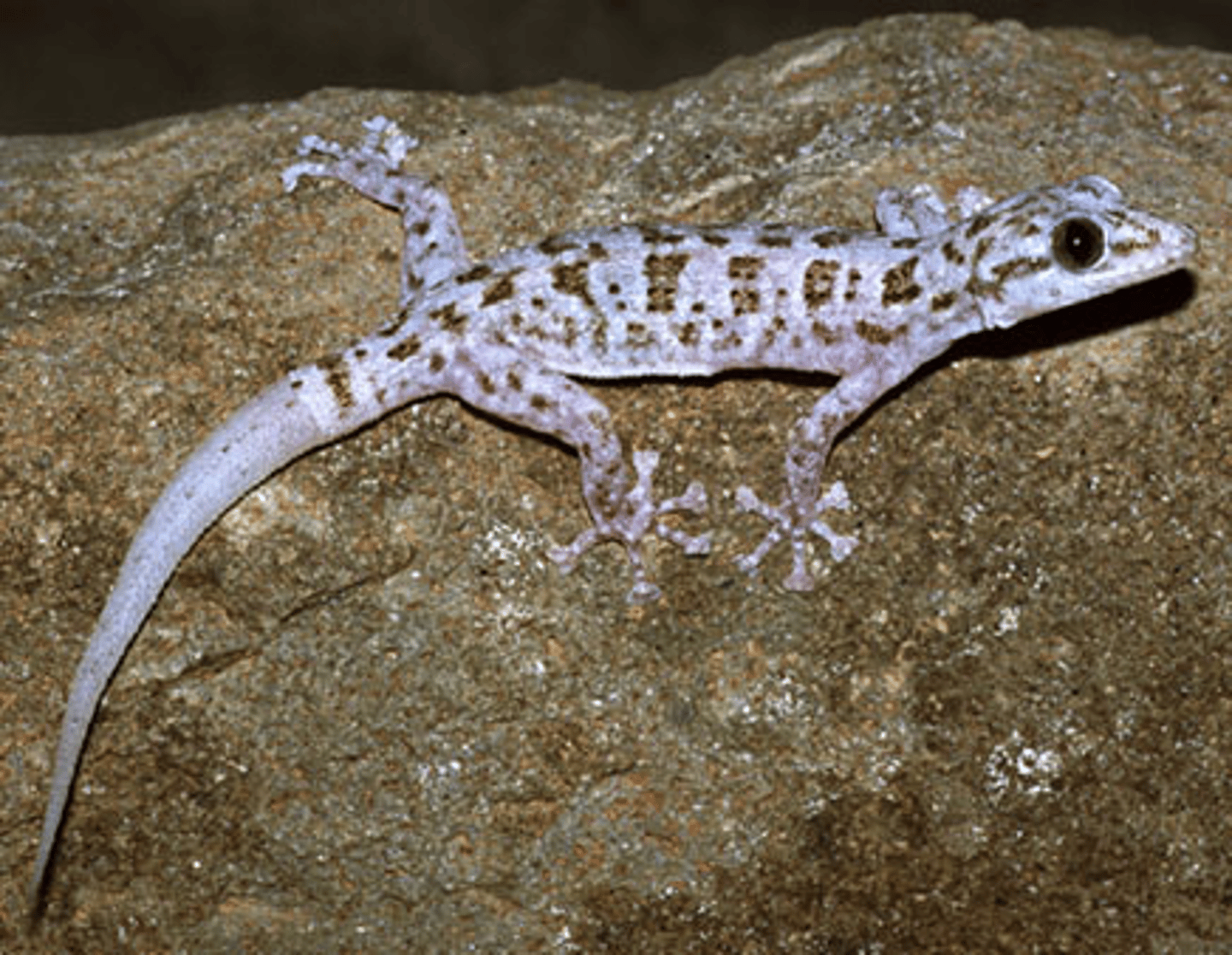
Lava lizards (Microlophus)
- 7 endemic species
- males 2-3x larger than females
- males more brightly colored or distinctly patterned
- females have bright red/orange throat color during mating season
- color can vary on surroundings
- do push ups as territorial display
- sensitive to movement, especially of small insects (reacts to thrown pebbles and candle flames)
- on all islands except Genovesa, Darwin, & Wolf
- M. albemarlensis is on all western and central islands
- San Cristobal, Floreana, Marchena, Espanola, Pinta, and Pinzon all have their own species
- Prey: moths, flies, beetles, grasshoppers, grubs, ants, spiders, scorpions
- Predators: hawks, snakes, mockingbirds, herons, centipedes
- can lose tail when attacked
Lava Lizard (13 facts)
- 1 Diet/Prey
- 4 Size/Color
- 3 Location
- 1 Reproduction/Displays
- 1 Predators
- 3 Other
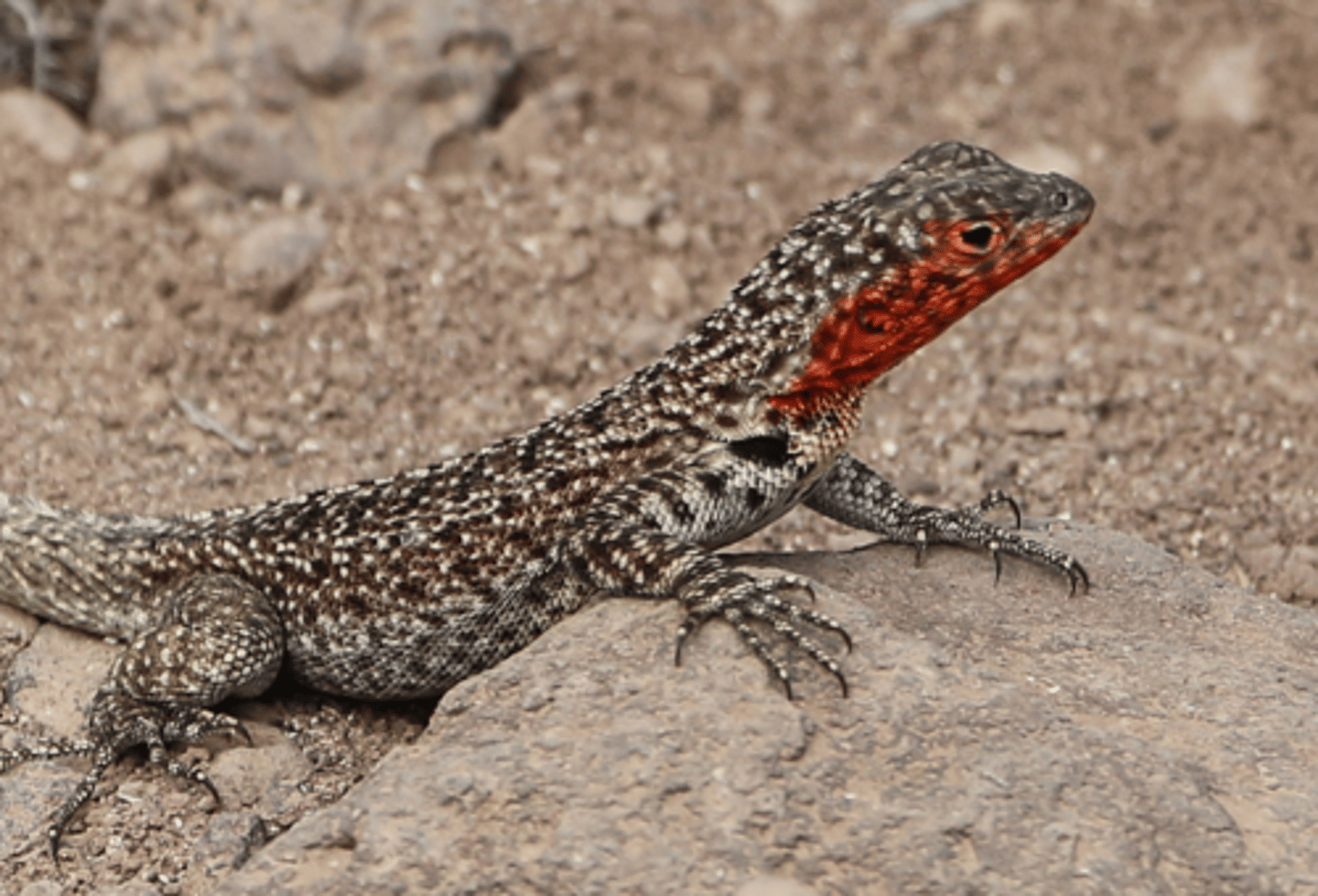
Land iguanas (Conolophus)
- "ugly animals, stupid looking" -Darwin
- on drier parts of several islands
- C. subcristatus found on Fernandina, Isabela, Santa Cruz, Plaza Sur, and Seymour Norte (introduced) and Baltra (reintrodced)
- C. pallidus is found on Santa Fe (yellower, more pronounced spines)
- Diet: Opuntia fruits and pads, Portulaca flowers, centipedes, finch nestlings
- males larger and more colorful
- color affected by body temp and excitement level
- displays include lowering head, head-nodding, arching back, and bloating throat and trunk.
- can live 60+ years
- reproduce at 8-12yrs
- male mates with female by grabbing hold of neck w/mouth, hooking leg over her, and bringing his tail underneath her
- lay btw 20-25 eggs in burrows 0.5m deep
- breeding season varies from Sept. - Jan. - June depending on island
- Predators: herons, egrets, hawks, owls for hatchlings. no predators as adults
- sunbathe to warm up, shade/burrows to cool down
- cleaned by birds like tortoises
- no longer on Santiago due to humans and
introduced animals (goats, rats, pigs, dogs).
- Iguanas from Baltra, Isabela, and Santa Cruz bred at Darwin Research Station since 1967
- new species (C. marthae) on Volcan Wolf. pink w/dark stripes. discovered in 1986, names species in 2009
Land Iguanas (19 facts)
- 1 Diet/Prey
- 2 Size/Color
- 6 Location
- 5 Reproduction/Displays
- 1 Predators
- 4 Other
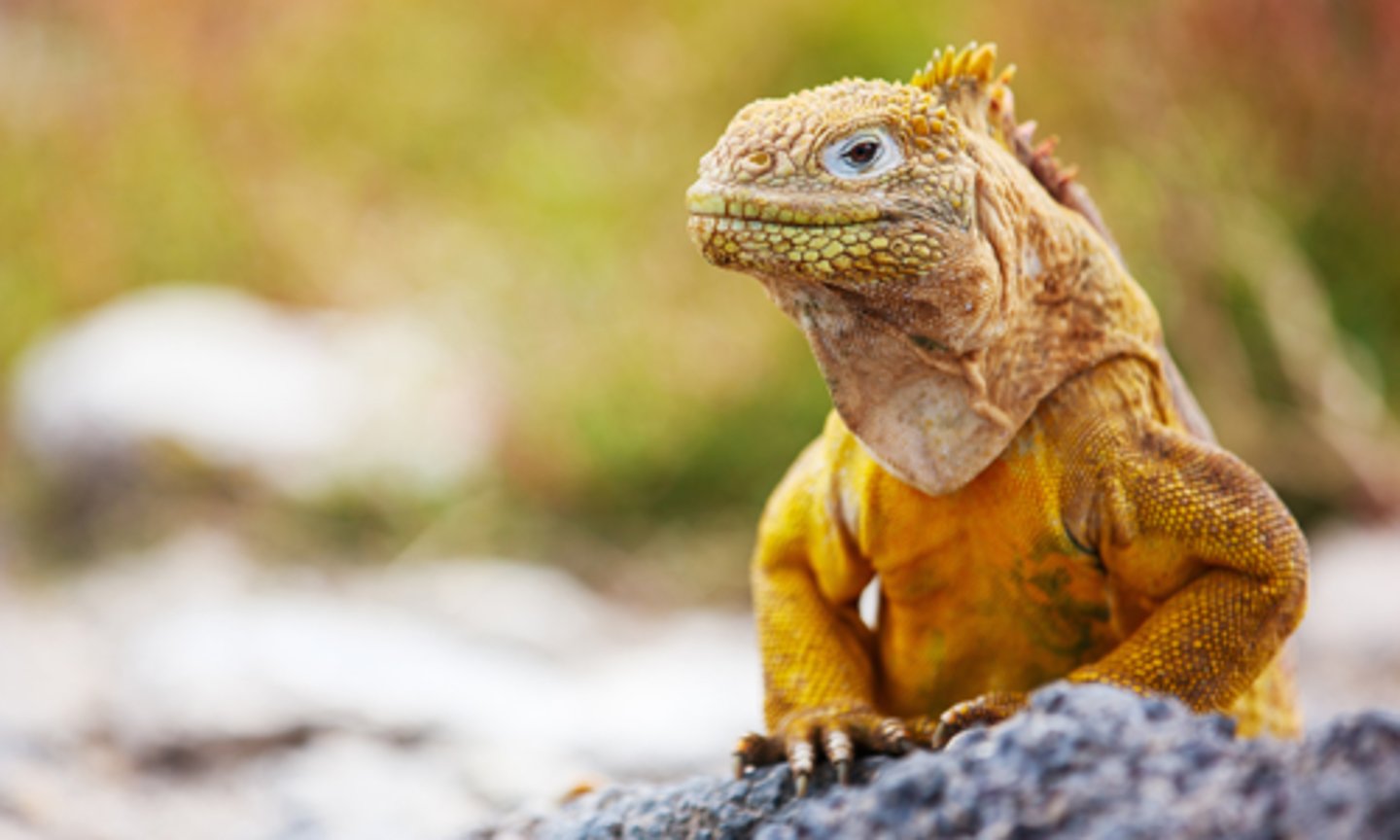
Marine iguanas (Amblyrhynchus cristatus)
- only sea-going iguana in the world
- throughout Galapagos, prefers southern coastlines
- bigger males feed by offshore diving
- can go 12+ meters deep for 5-10 minutes (max 60 minutes)
- Diet: almost exclusively algae
- eat lots of salt bc of algae, sneeze it out
- most effective salt glands of any reptile
- biggest males feed at midday, rest wait for low tide
- can lose up to 10 degrees Celsius when swimming, will flatten and face sideways to sun for max surface area exposure
- lay in "flat basking posture" to soak in heat until 35.5 degrees Celsius,
- "elevated basking" when they raise their front half to limit sun exposure and get breeze under body
- black with few gray, green, or reddish spots.
- during the breeding season, skin becomes mottled red, orange, green, and black.
- territorial displays by males include head-bobbing, head-butting, and pushing
- females aggressive when nesting, guard from other females
- nest in sandy areas
- hatchlings emerge after 3-4 months
- Predators: hawks, snakes, lava gulls, herons, cats, and dogs
Marine Iguanas (18 facts)
- 5 Diet/Prey
- 2 Size/Color
- 1 Location
- 4 Reproduction/Displays
- 1 Predators
- 3 Temperature Regulation
- 2 Other
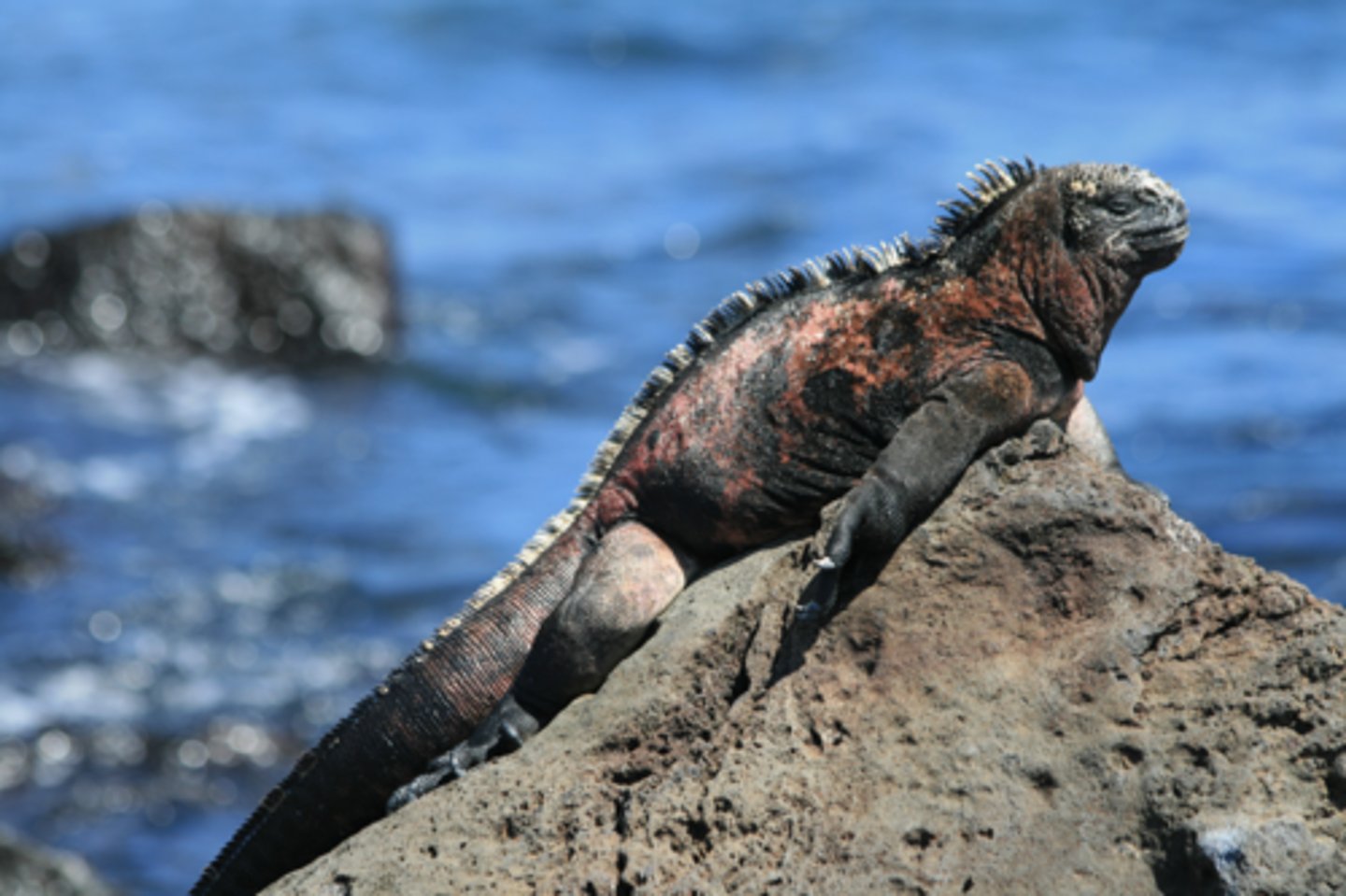
From the word "Galapago" meaning saddle
"Galapagos" name origin
- Seabirds (19 species, 5 endemic. Adapted salt tolerance)
- Shore Birds & Migrants (quite common, 1,350 km of coastline including beaches, rocky shores, mangrove lagoons, etc.)
- Land birds (least common, 80% endemic, possibly only 14 colonization events)
Types of Birds
Galápagos Penguin (Spheniscus mendiculus)
- endemic and endangered (<5,000 individuals)
- 3rd smallest penguin species (35cm tall)
- only penguin north of equator
- likely colonized from Humboldt species and current
- on west coast of Isabela and Fernandina (sometimes Bartolome island and Pinnacle Rock)
- adults black & white w/stripe, juveniles gray w/no stripe
- Prey: fish and some crustaceans
- Predators: sharks, sea lions, fur seals, introduced rats, cats, & dogs
- spread wings, shade feet, and pant rapidly (gull fluttering) to cool off
- mate for life in cave with 1-2 eggs
Galapagos Penguin (10 facts)
- 1 Diet/Prey
- 2 Size/Color
- 3 Location
- 1 Reproduction/Displays
- 1 Predators
- 1 Temperature Regulation
- 1 Other
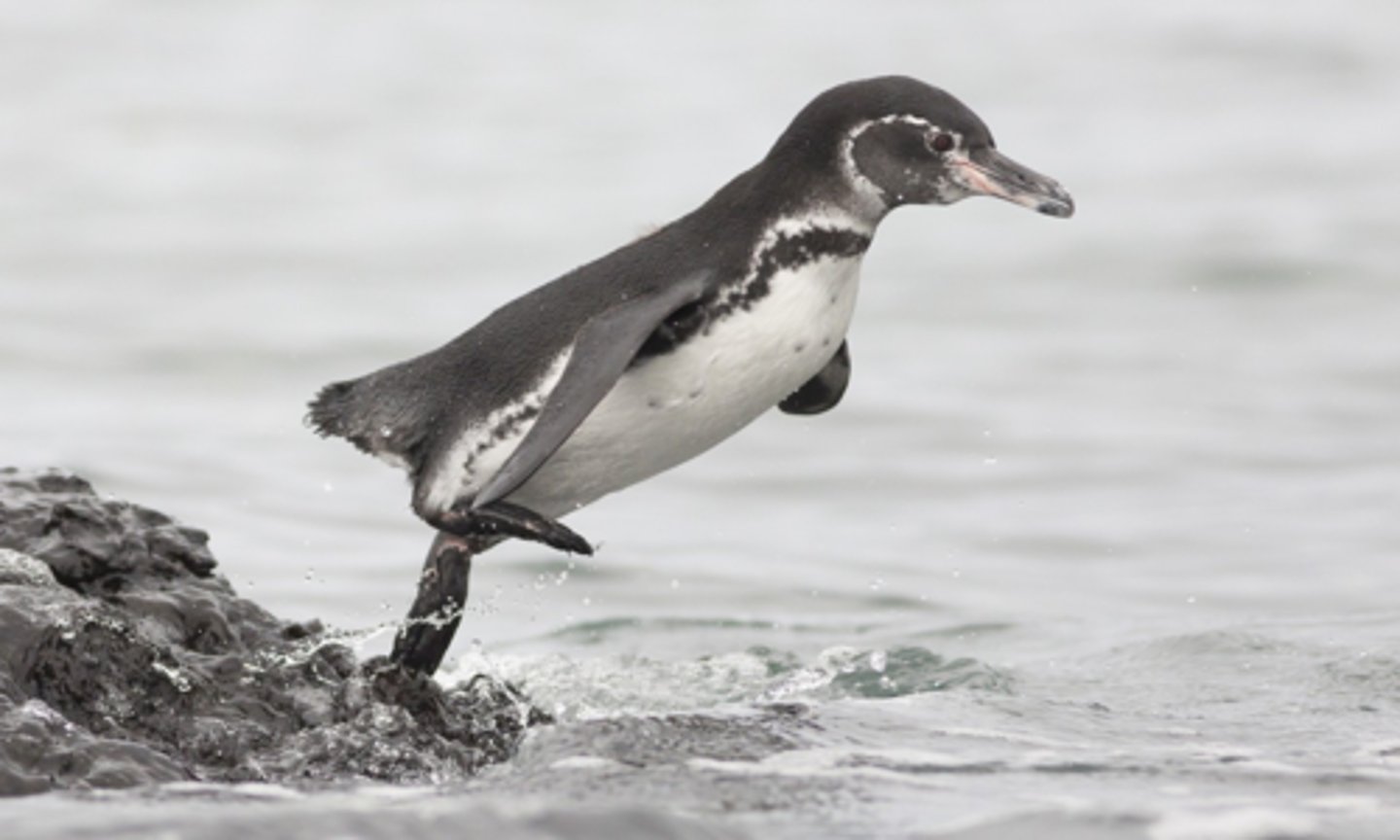
Waved Albatross (Phoebastria irrorata)
- wingspan of over 2m
- 12,000 pairs
- Nest on Espanola
- return to island in March for breeding, one large white egg laid in May
- mate for life
- young feeds on oily liquid of digested fish and squid from parents stomach (up to 2kg of it) (Proventriculus is where liquid is produced)
- chicks leave colony and spend years at sea, returning 4-5yrs later
-peak courtship in October
Waved Albatross (8 facts)
- 1 Diet/Prey
- 1 Size/Color
- 1 Locations
- 4 Reproduction/Displays
- 1 Other
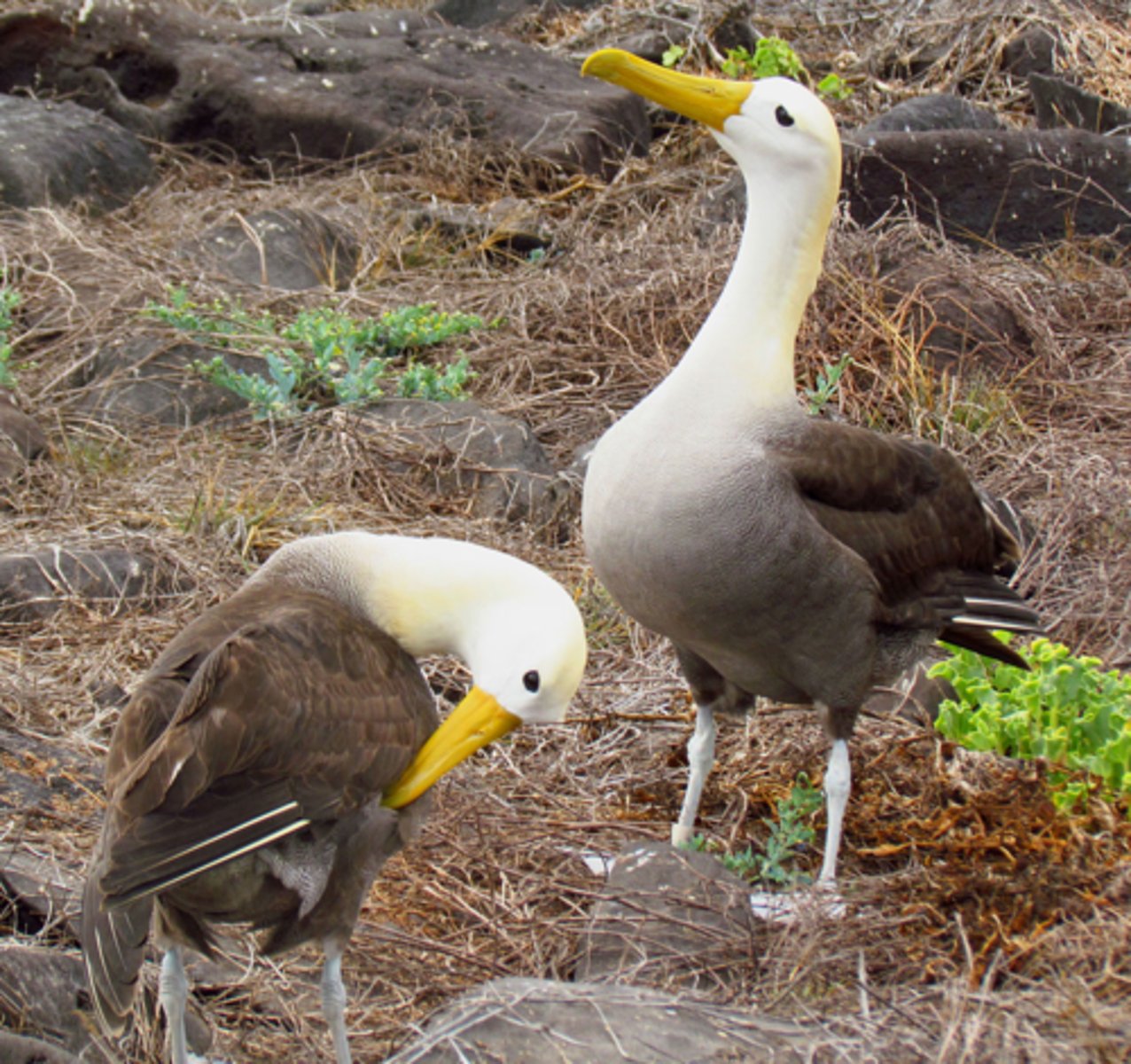
1) clacking sound using bills
2) males bowing by sticking bill up and making high pitched "whoo-oo" sound
3) gaping open bills
4) "sway-walk" a highly exaggerated rocking while walking
5) "forward bobbing" to show ownership of the location
Waved Albatross Mating Dance
Red-billed Tropicbird (Phaethon aethereus)
- few thousand pairs
- nest in cliffs
- flies far out to sea to feed
- feeds by plunge diving
- resident, but not endemic (in east Pacific and Atlantic)
- easily distinguishable
- single egg in each nest
- mate all year round
Red-billed Tropicbird (8 facts)
- 2 Diet/Prey
- 2 Location
- 2 Reproduction/Displays
- 2 Other
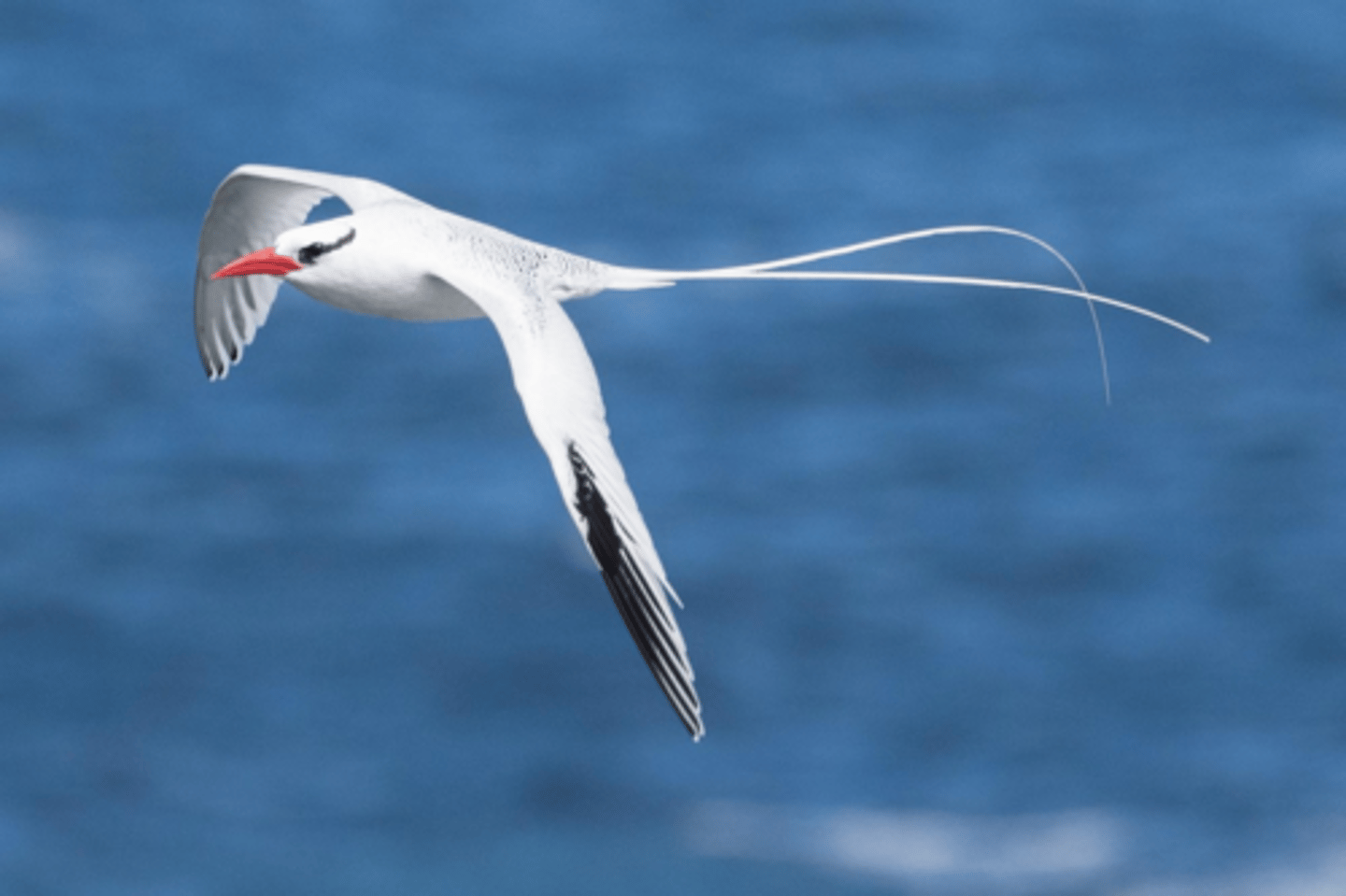
Brown Pelican (Pelecanus occidentalis)
- few thousand pairs (resident)
- state bird of Louisiana
- commonly seen around boats
- feeds by plunge diving in shallow water (will drain water and swallow small fish)
- great fliers
- adults have white and chestnut-brown markings on heads and necks during breeding season, with a tinge of yellow at top
- breeding throughout year
- nest in mangroves, saltbush, or other coastal plants
- lay 2-3 eggs in lousy twig nest
Brown Pelican (9 facts)
- 1 Diet/Prey
- 1 Size/Color
- 1 Location
- 3 Reproduction/Displays
- 3 Other
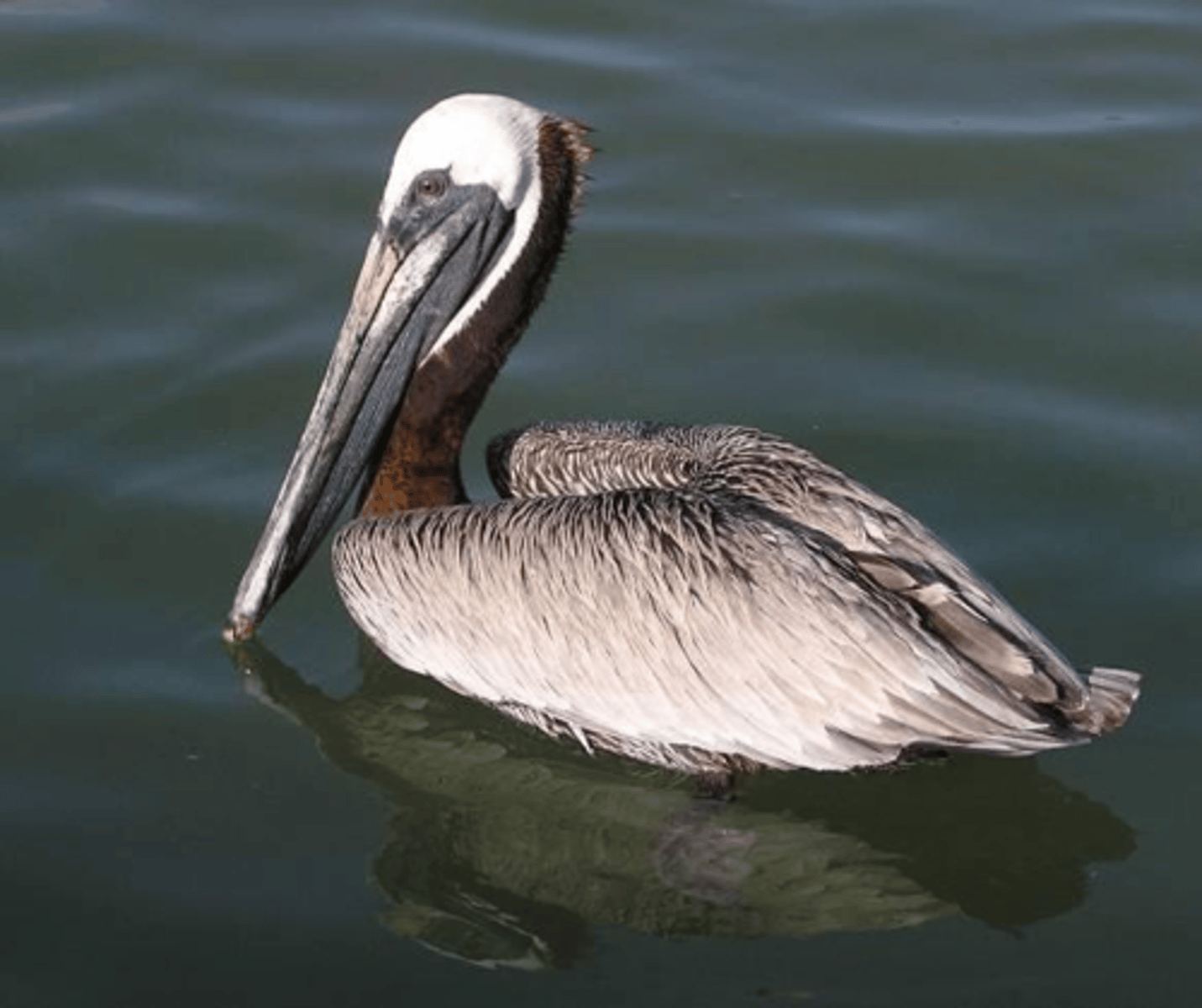
Blue-footed Booby (Sula nebouxi)
- most commonly seen booby (more than 10,000)
- Females easily distinguished from males, females honk, males long whistle.
- Females larger eye pupils
- 1-3 eggs laid on bare ground 3-5 days apart (exhibit facultative siblicide due to food availability)
- nest surrounded by ring of guano, represents boundary of nest. If
chick crosses boundary, might not be allowed back.
- The male initially does fishing while chicks in nest. Later both do fishing.
- Predators: hawks, owls, and frigatebirds
Blue-footed Booby (7 facts)
- 1 Diet/Prey
- 2 Reproduction/Displays
- 1 Predators
- 3 Other
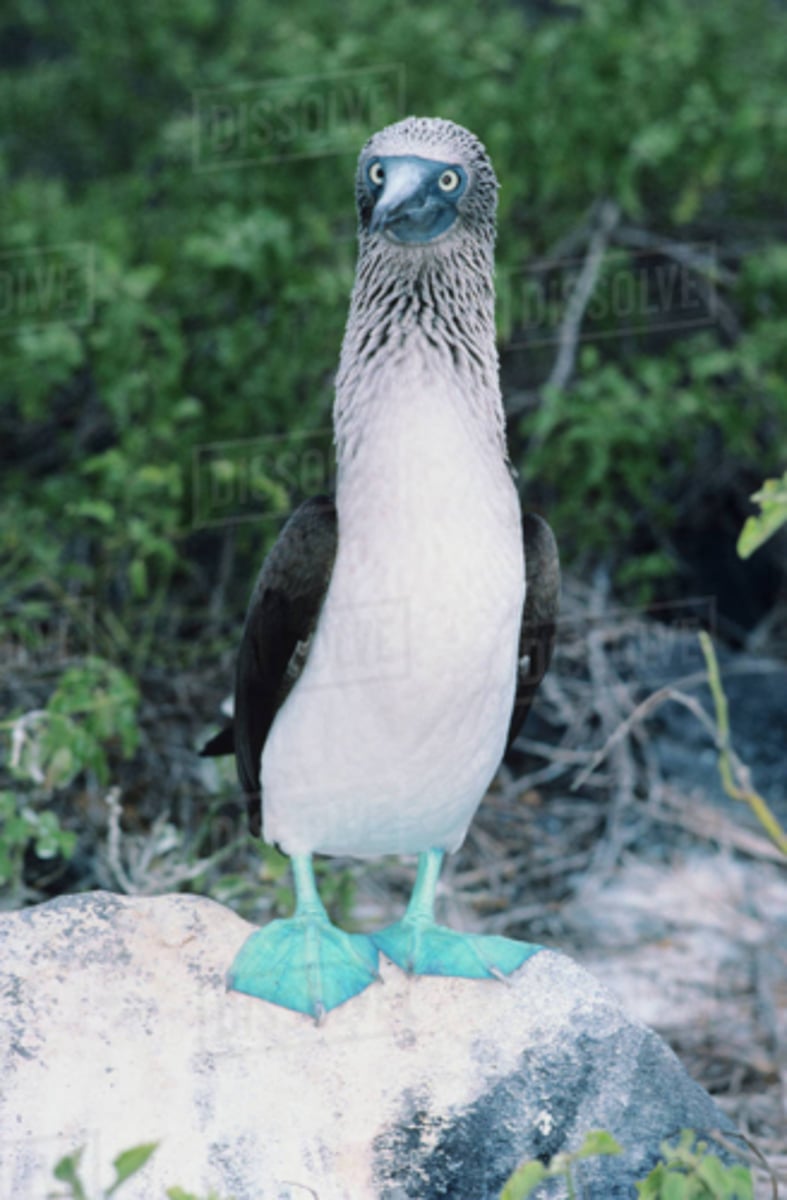
1) male sky pointing
2) male and female approach
3) male raises and shows off feet
4) more sky pointing
5) mating (male sometimes offers sticks and stones)
Blue-footed Booby Mating Dance
Nazca Booby (Sula granti)
- largest booby
- females larger than males
- 25-50,000 pairs
- nests on the ground like blue footed
- near cliffs since its heavier, use air currents for takeoff
- lay two eggs, both hatch, only one reaches maturity due to aggression by older chick (obligate siblicide)
- females quack, males weak whistle
- both feed farther offshore than blue footed
Nazca Booby (8 facts)
- 1 Diet/Prey
- 2 Size/Color
- 2 Location
- 1 Reproduction/Displays
- 2 Other
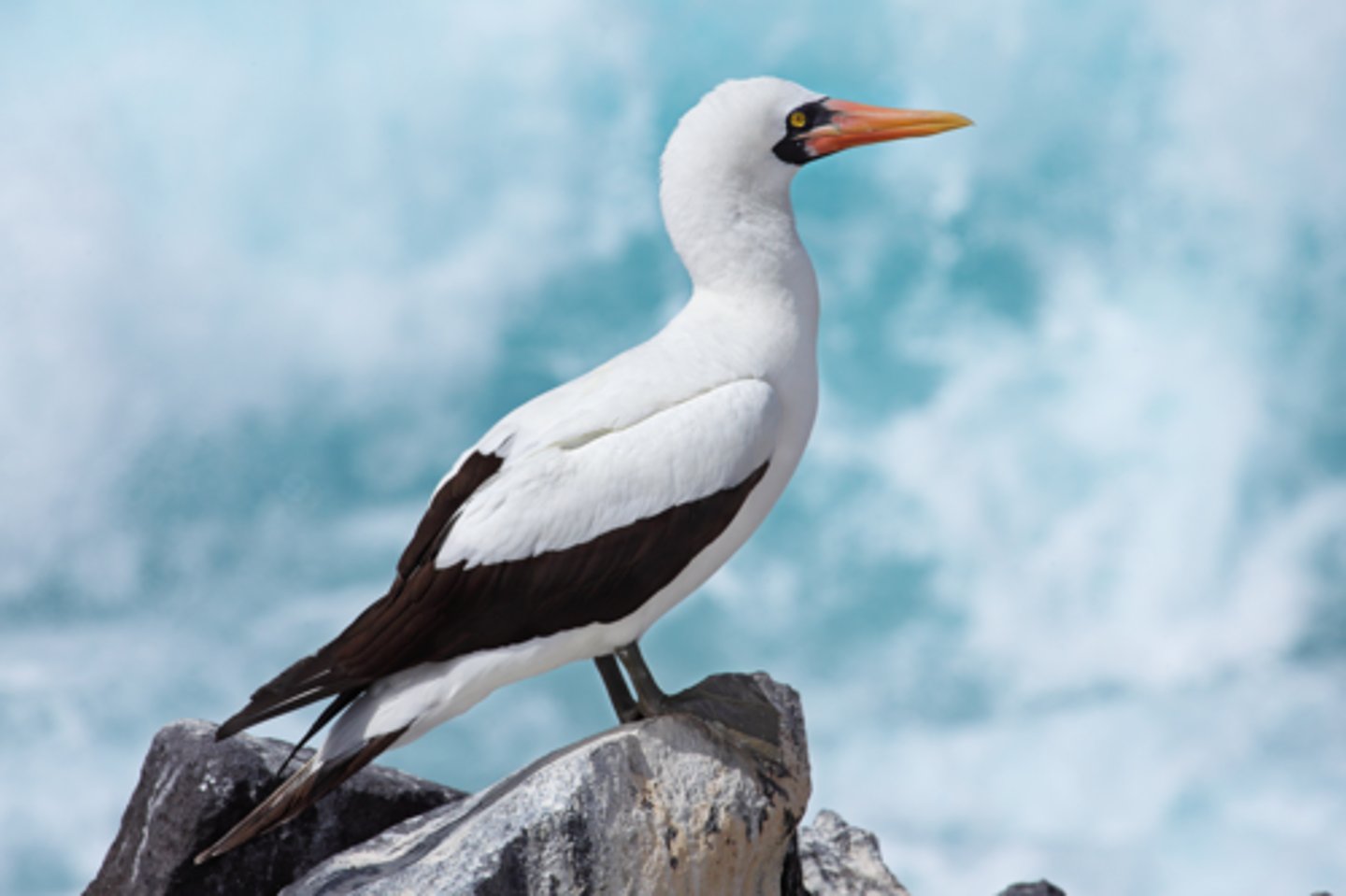
Red-footed Booby (Sula sula)
- largest population of booby (250,000 pairs)
- feeds far out to sea, collecting flying fish and squid.
- blueish bill. brown in feather color, some white
- nest in trees and shrubs (prehensile feet enable them)
- females and males have similar calls, though male has higher- pitched more nasal quacking than the gruffer quacking of the female
- breeding and egg laying occurs throughout the year (no siblicide, 1 egg)
- prefer nest in saltbush, incense tree
Red-footed Booby (7 facts)
- 1 Diet/Prey
- 1 Size/Color
- 2 Location
- 1 Reproduction/Displays
- 2 Other
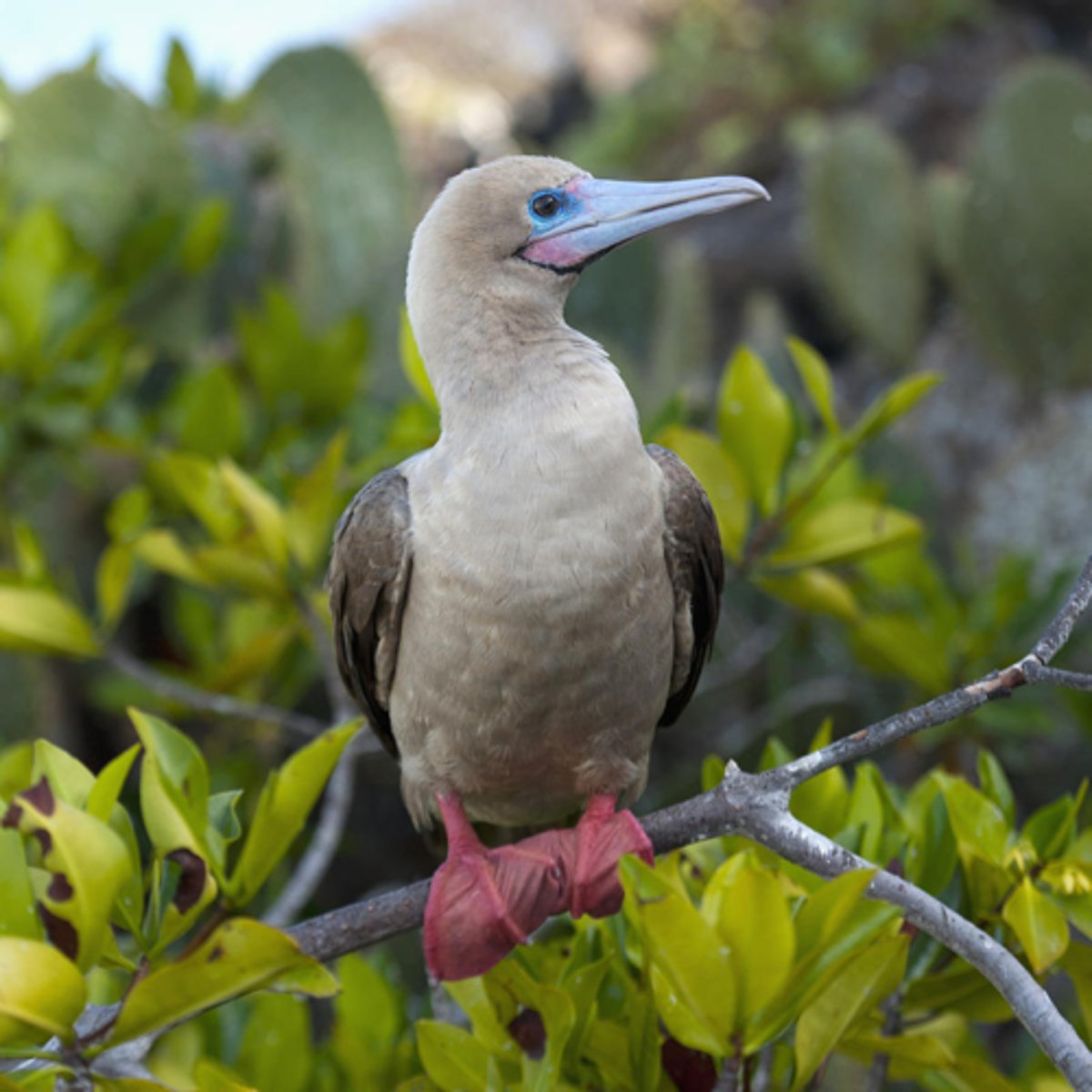
Flightless Cormorant (Phalacrocorax harrisi)
- 700-800 pairs
- found on coasts of Isabela and Fernandina.
- endemic, endangered, only species that cant fly (wings too small, lost keel of breastbone)
- dark brown to black above, brownish below, turquoise eyes.
- males larger than females.
- tremendous swimmers, can dive for fish, eels, and octopuses.
- Two or three whitish eggs laid in nests of seaweed and other ocean flora
Flightless Cormorant (7 facts)
- 1 Diet/Prey
- 2 Size/Color
- 1 Location
- 1 Reproduction/Displays
- 2 Other
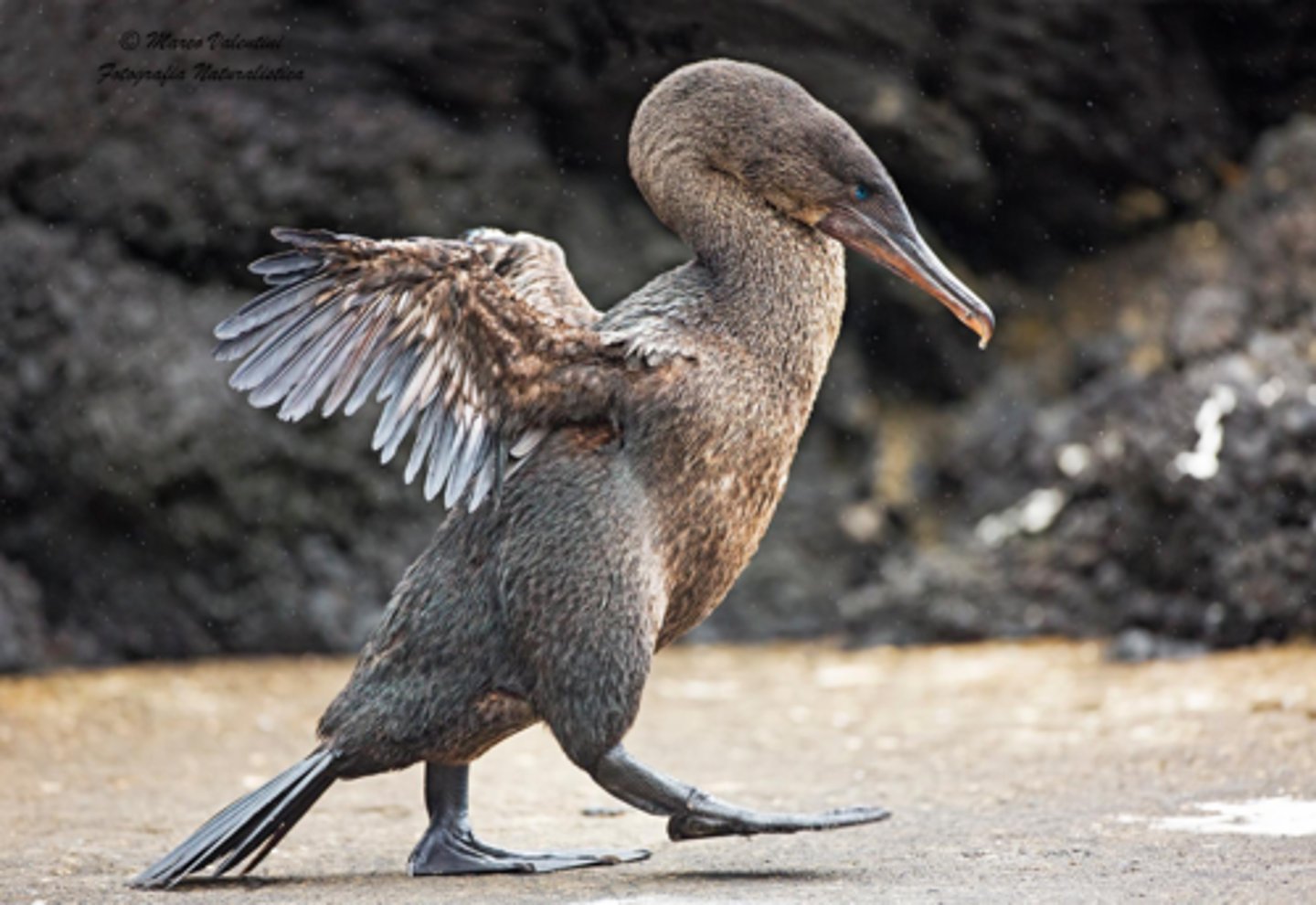
1) swim around each other with necks out while growling
2) raise up from water, point beak upward, flap wings, and shake.
Flightless Cormorant Aquatic Mating Dance
Great Frigatebird (Fregata minor)
- great fliers
- adult male all black with green sheen on back, brown band across wings.
- Magnificent Frigatebird (Fregata magnificens) has purple sheen back, no brown band.
- adult female great frigatebirds have white abdomen and breast feathers extending up to the chin, reddish eye ring
- adult female magnificent frigatebirds, the white area extends only up to the throat, blueish eye ring
- Juveniles great frigatebirds have white head with rusty tinge, magnificent frigatebird all white.
- males have bright red gular sacs that inflate during courting session (dulls and shrinks in off season)
- male shakes wings, displays pouches, and calls to females flying over.
- 1 egg per nest (in nest for 5 months)
- Prey: fish and squid, baby sea turtles (will often pirate from other birds)
- Predators: frigatebirds, hawks, and owls.
Great Frigatebird (11 facts)
- 1 Diet/Prey
- 6 Size/Color
- 2 Reproduction/Displays
- 1 Predators
- 1 Other

Swallow-tailed Gull (Creagrus furcatus)
- endemic, 10-15,000 pairs
- feed at night on squid and fish
- chicks peck for feeding
- white beak tip
- night vision eyes with coloration to see each other
- 1 egg in stone/coral nest
- main alarm call is know as "rattle-and-whistle" (loudest call)
- Downward piping" also heard as a greeting
- "upward jerk", in which the head is jerked backward several times.
- "foot watching" is a sign of submission
- male regurgitates in front of female during courtship
Swallow-tailed Gull (11 facts)
- 2 Diet/Prey
- 2 Size/Color
- 6 Reproduction/Displays
- 1 Other
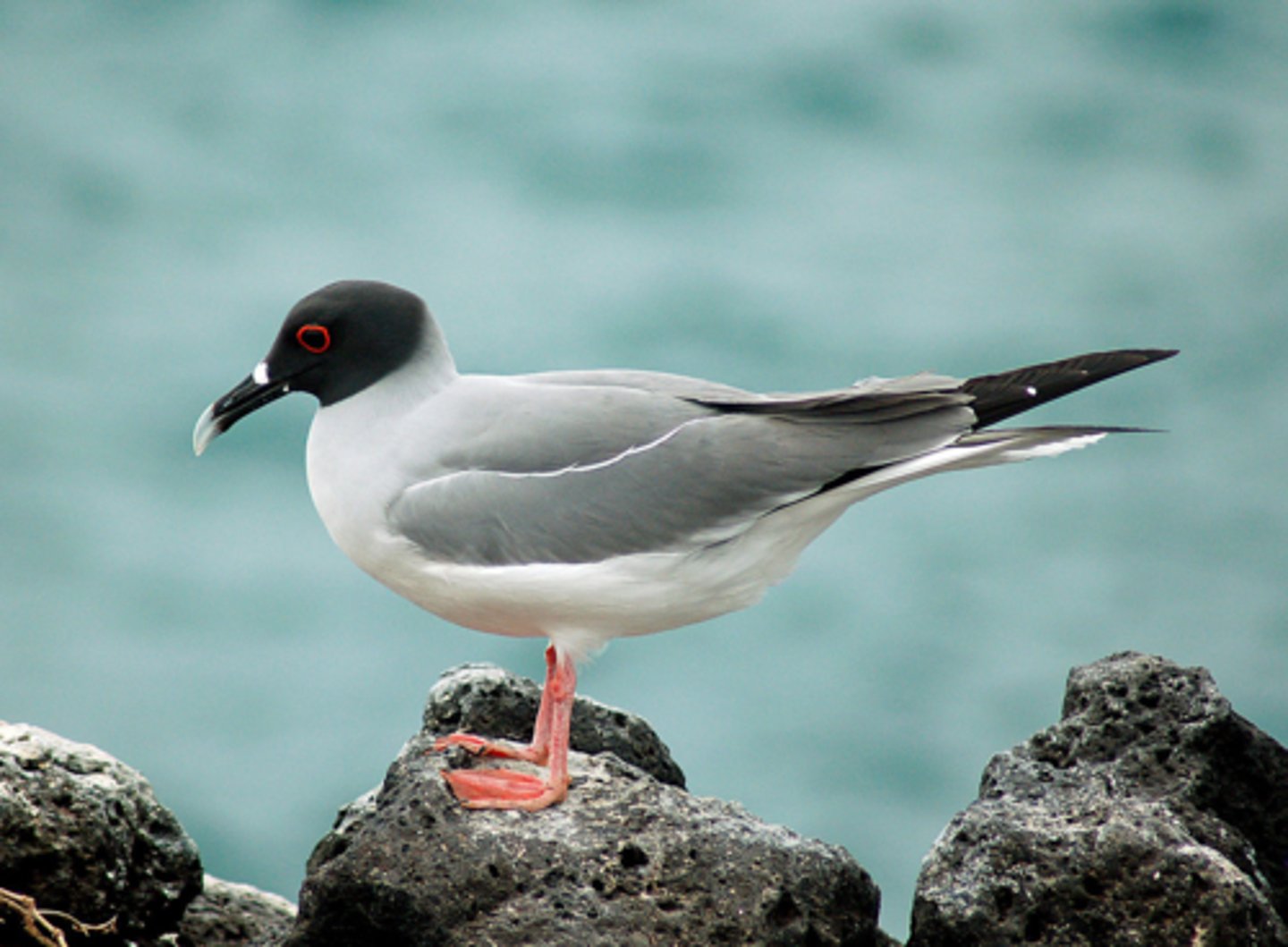
Lava Gull (Leucophaeus fuliginosus)
- endemic, vulnerable, rarest gull in world (300-400 pairs)
- dark gray color
- long loud laughing call
- nest alone, lay two eggs
- Prey: primarily a scavenger, also eat small fish, other eggs, baby iguanas, and sea turtles
Lava Gull (5 facts)
- 1 Diet/Prey
- 1 Size/Color
- 1 Reproduction/Displays
- 2 Other
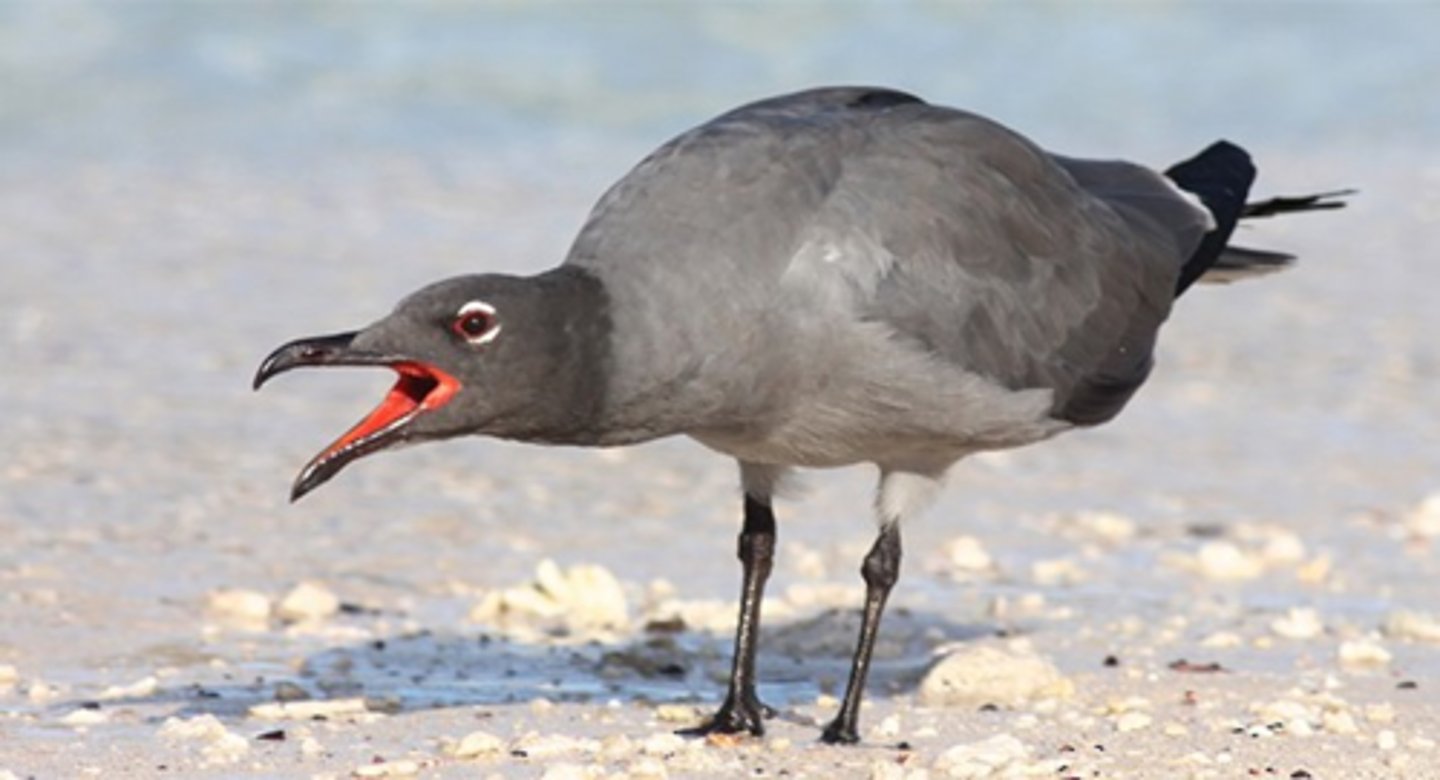
Great Blue Heron (Ardea herodias)
- not endemic
- largest of the herons (up to 1.4 m tall), easily recognizable.
- primarily gray
- Prey: fish, lizards, young marine iguanas, sea turtle hatchlings
- quickly stab at prey with beak
Great Blue Heron (5 facts)
- 2 Diet/Prey
- 2 Size/Color
- 1 Other
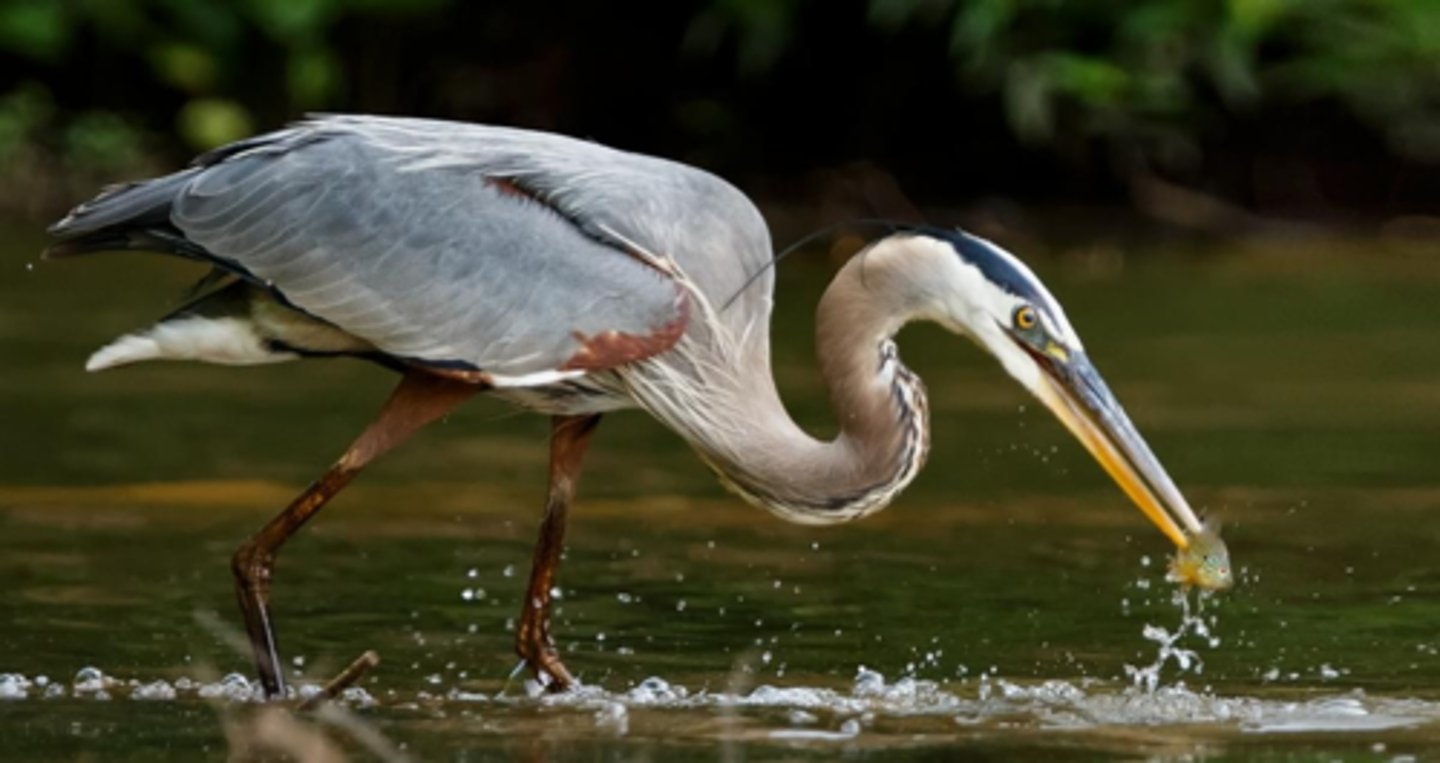
Great Egret (Ardea alba)
- large white bird
- Prey: same as Great Blue Heron + baby land iguana, insects and young rats
Great Egret (2 facts)
- 1 Size/Color
- 1 Diet/Prey

Striated (Lava) Heron (Butorides striata sundevalli)
- feeds along rocky coastlines.
- Prey: small fish, crabs, lizards in tide pools and in lava depressions
- young are brownish in color, with dark streaking.
- nest under rocks or among mangrove roots, lay up to 3 eggs.
Striated (Lava) Heron (4 facts)
- 2 Diet/Prey
- 1 Size/Color
- 1 Reproduction/Display
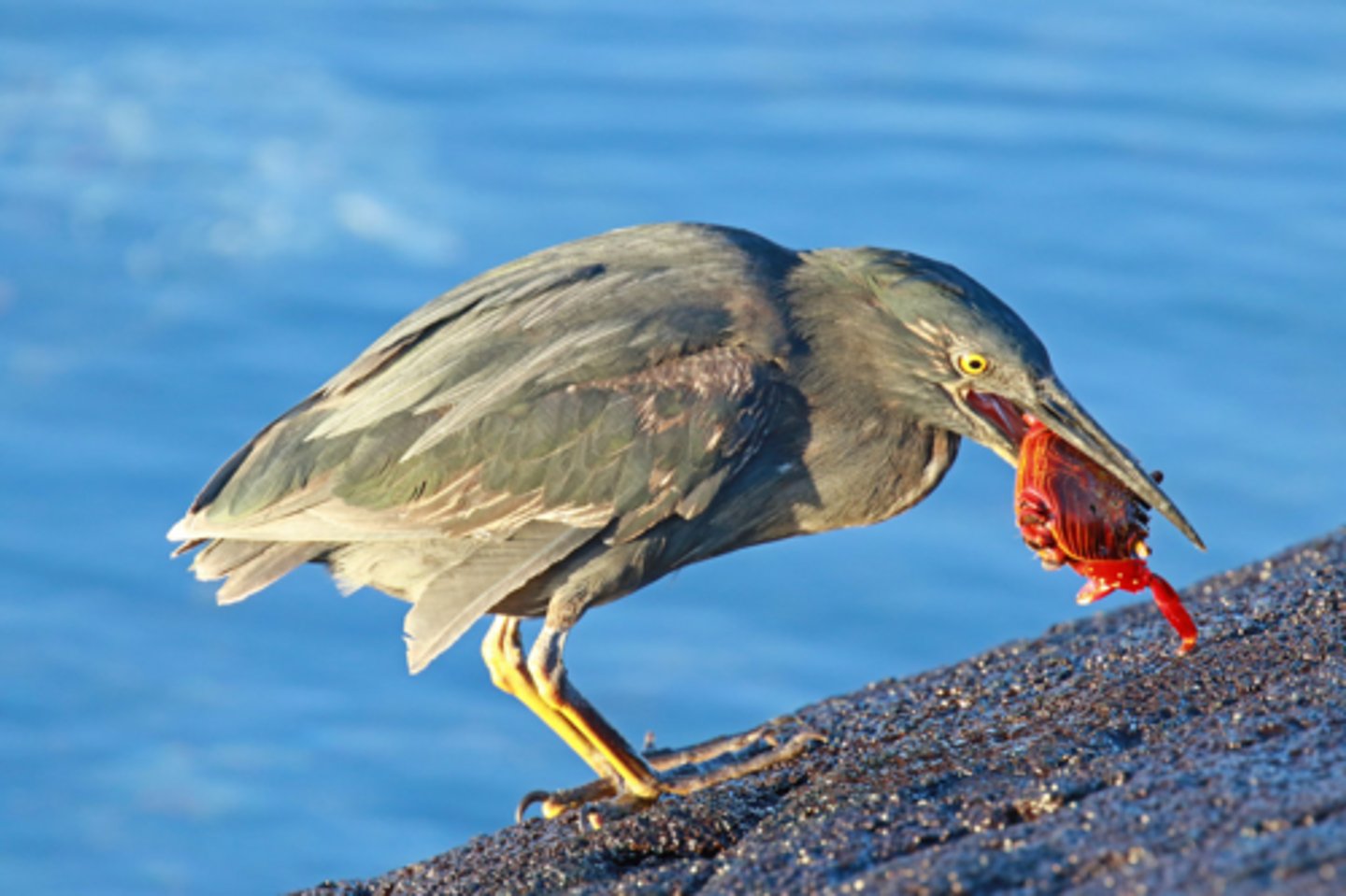
Yellow-crowned Night Heron (Nyctanassa violacea)
- feeds at night on insects, crabs, scorpions, and centipides
Yellow-crowned Night Heron (1 Diet fact)
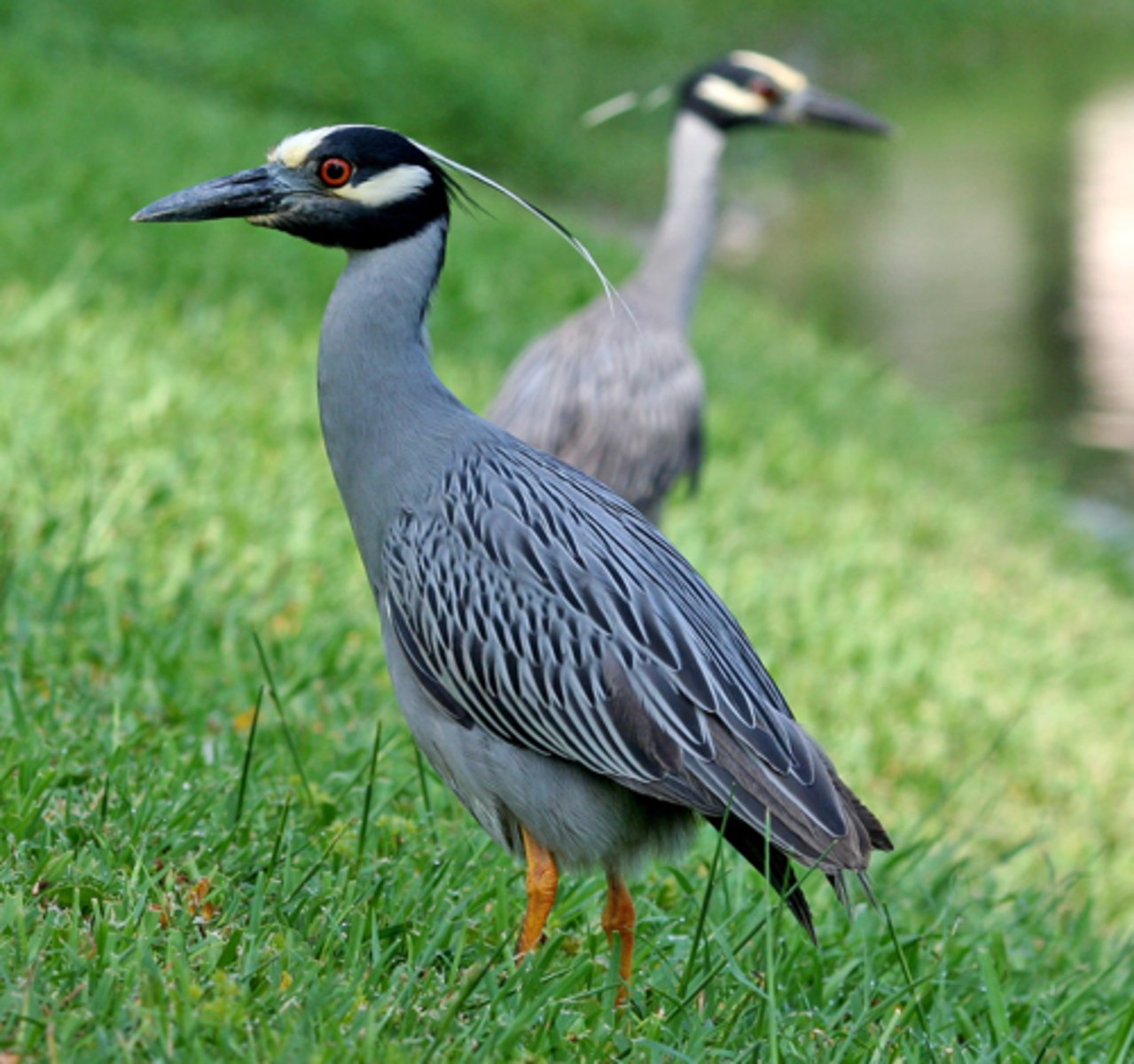
Greater Flamingo (Phoenicopterus ruber)
- 500 individuals
- feeds in lagoons with heads upside down. sucks water through front of bill, pumps it out through side, filtering out small animals that it eats
- wade in water, but can swim
- 1 egg laid on mud/sand mound.
- bills do not take curved shape for about three weeks, fed by the parents in meantime
Greater Flamingo (5 facts)
- 1 Diet
- 1 Reproduction
- 3 Other
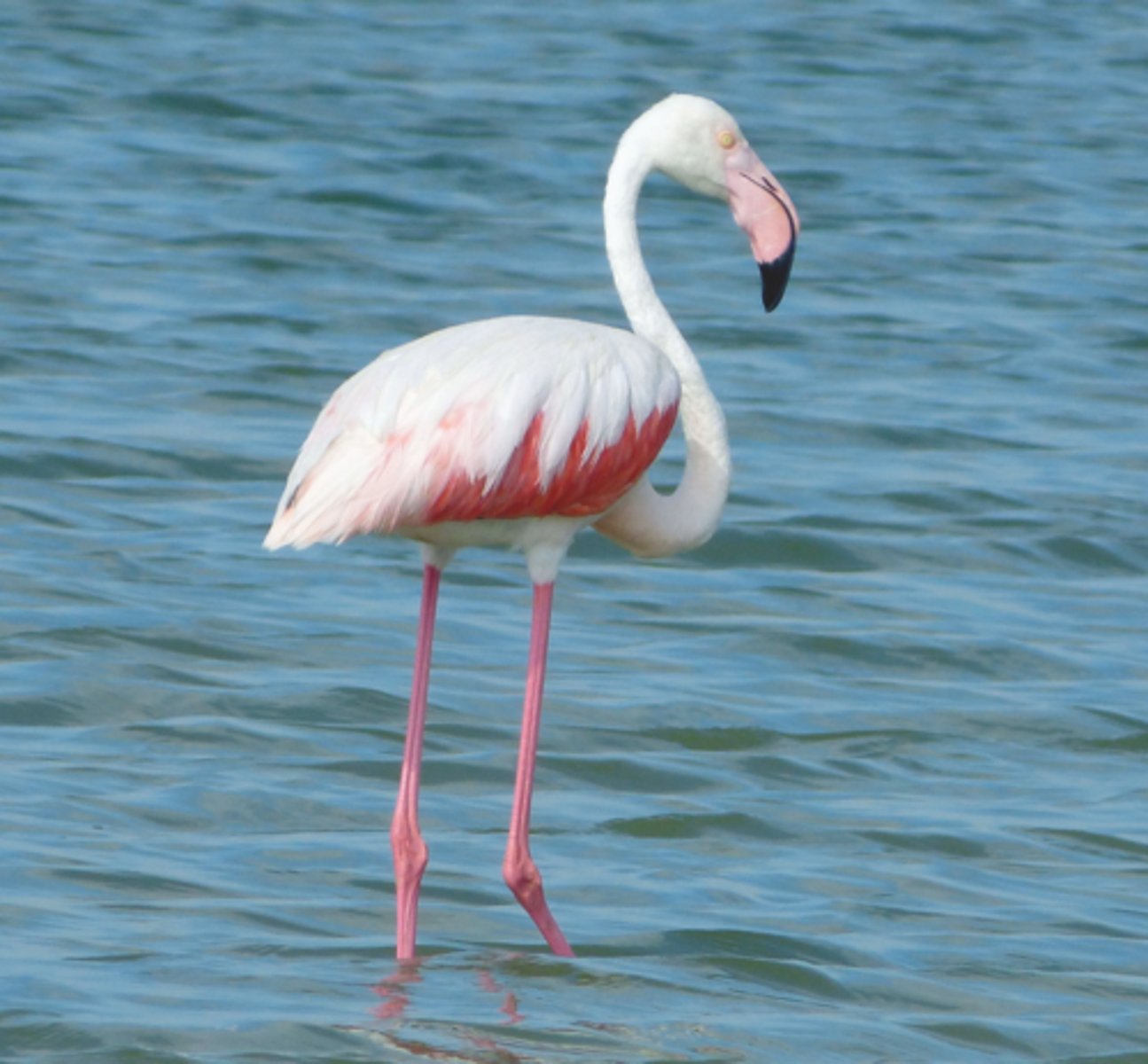
American Oystercatcher (Haematopus palliatus)
- native
- 200 pairs on beaches and rocky shores
- eat crabs and mollusks
- debated subspecies, H. p. galapagensis
- lays two speckled eggs among rocks on shoreline. Adults seen in pairs.
- Remember its eye for the exam
American Oystercatcher (5 facts)
- 1 Diet
- 1 Reproduction
- 3 Other

Whimbrel (Numenius phaeopus)
- distinct downward curving bill and call that consists of several rapid whistles
Whimbrel (1 fact)
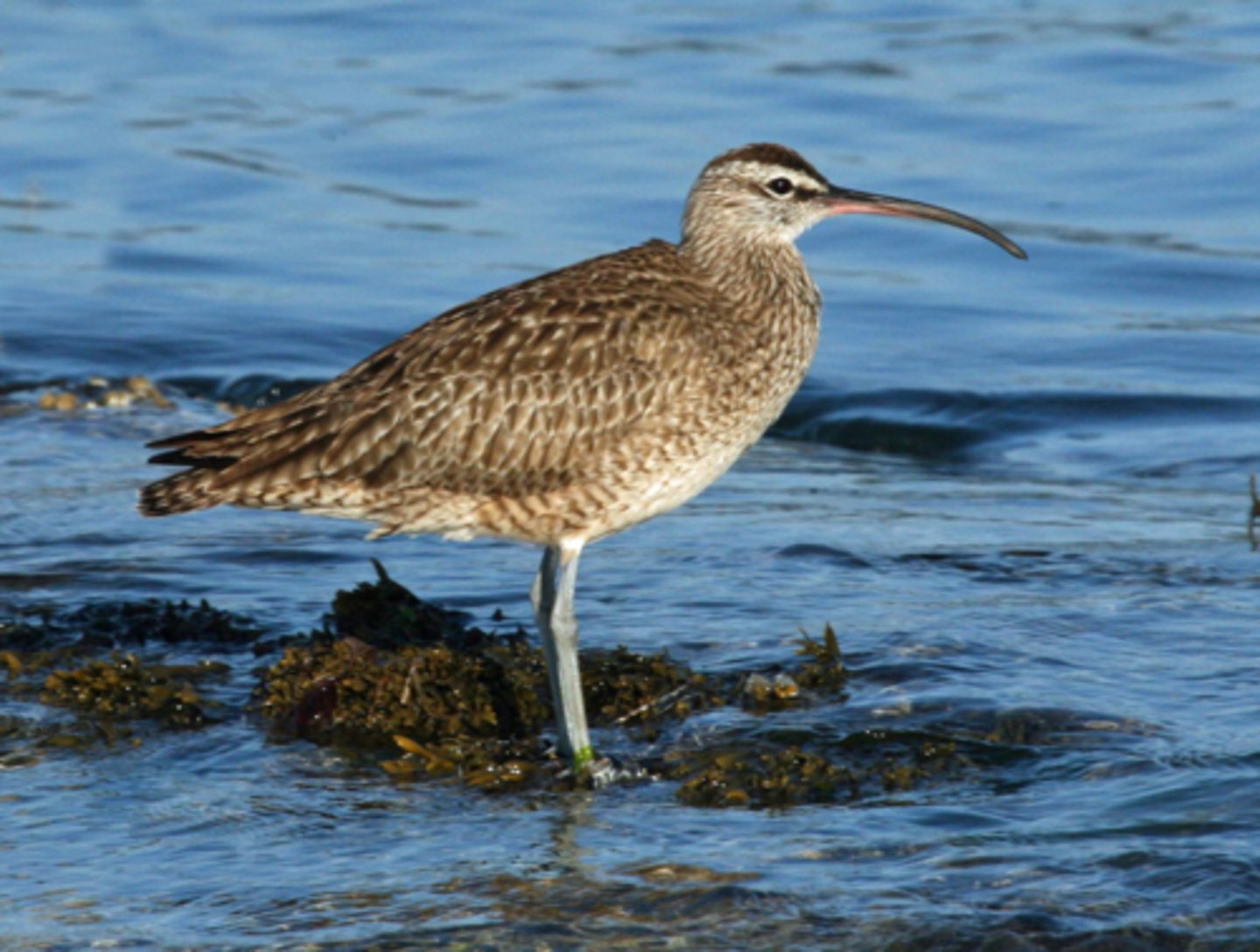
Galapagos Hawk (Buteo galapagoensis)
- extremely tame
- Darwin wrote about it
- Adults dark brown, juveniles light brown
- cooperative polyandry mating system (up to 4 males mate with 1 female, all care for young)
- Prey: lizards, iguanas, rats, doves, mocking birds, centipedes, grasshoppers, young seabirds.
Galapagos Hawk (5 facts)
- 1 Diet
- 1 Color
- 1 Reproduction
- 2 Other
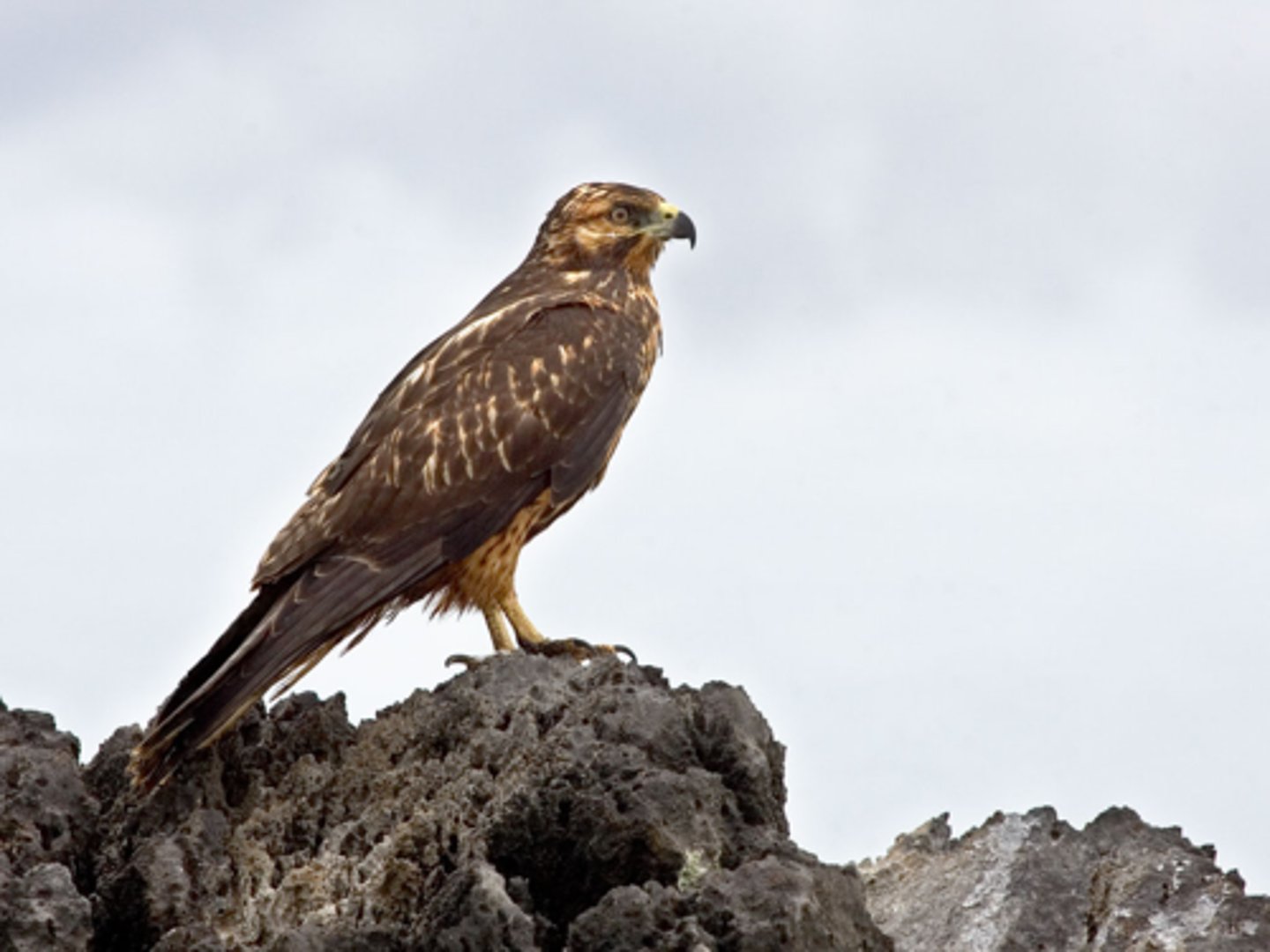
Short-eared Owl (Asio flammeus galapagoensis)
- endemic subspecies
- hunts small birds during day, seen often unless competing with hawks
Short-eared Owl (2 facts)
- 1 Diet
- 1 Other

Galapagos Dove (Zenaida galapagoensis)
- endemic
- in the drier zones on most main islands
- pretty tame, mentioned by Darwin
- Individuals on Darwin and Wolf are larger, considered subspecies
- feed on Opuntia flowers and seeds, and insects
- might pollinate
- lay 2 eggs, nest under rocks
Galapagos Dove (7 facts)
- 1 Diet
- 1 Size
- 1 Location
- 1 Reproduction
- 3 Other

Vermillion Flycatcher (Pyrocephalus nanus)
- In highland areas
- eats insects out of air with clicking sound
- nest made of mosses, lichens, liverworts
- male bright red, female brown and bright yellow
Vermillion Flycatcher (4 facts)
- 1 Diet
- 1 Color
- 1 Location
- 1 Reproduction
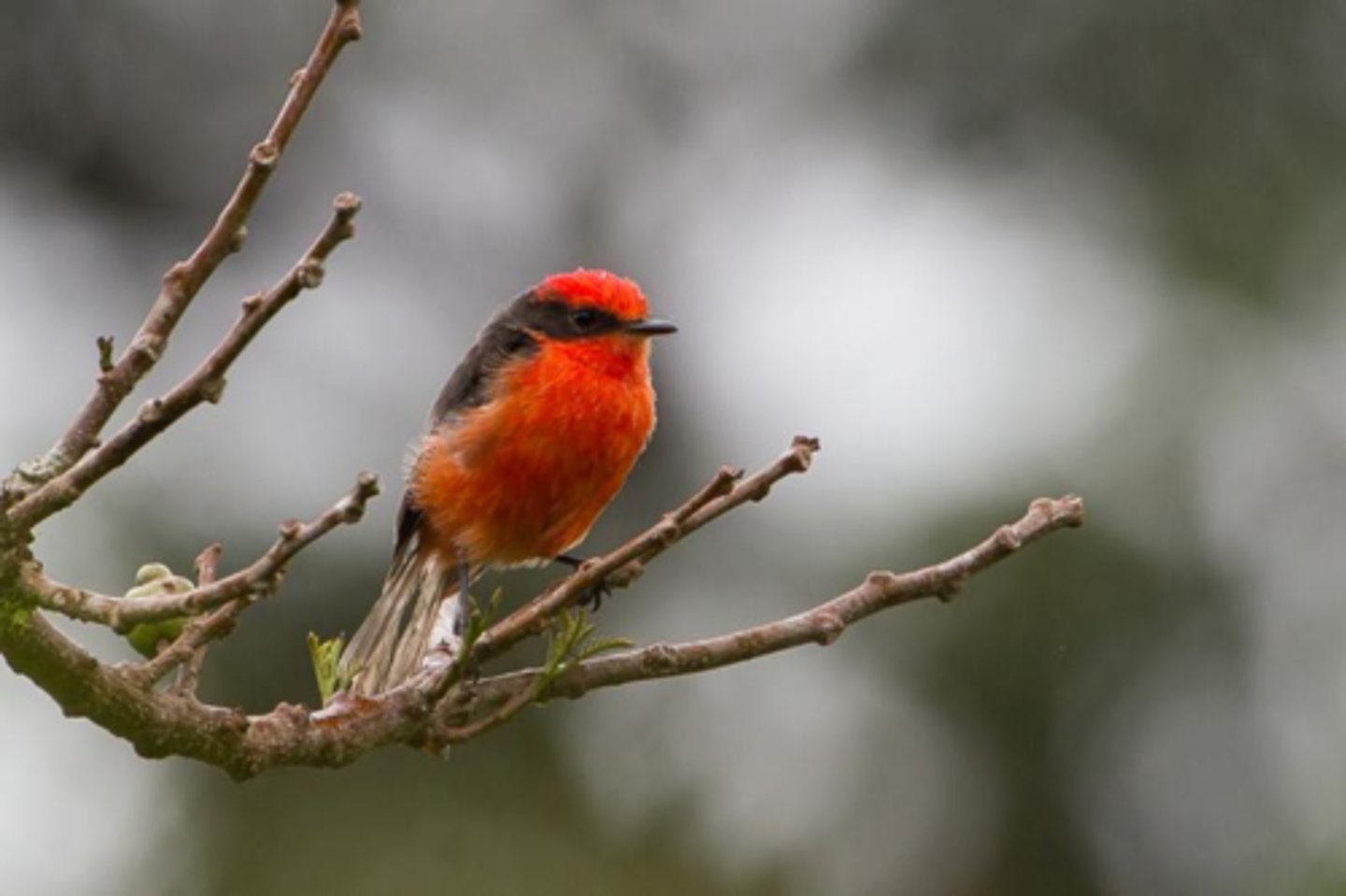
Galapagos Flycatcher (Myiarchus magnirostris)
- larger and wider bill than vermilion
- in more arid parts than vermillion
Galapagos Flycatcher (2 facts)
- 1 Size
- 1 Location
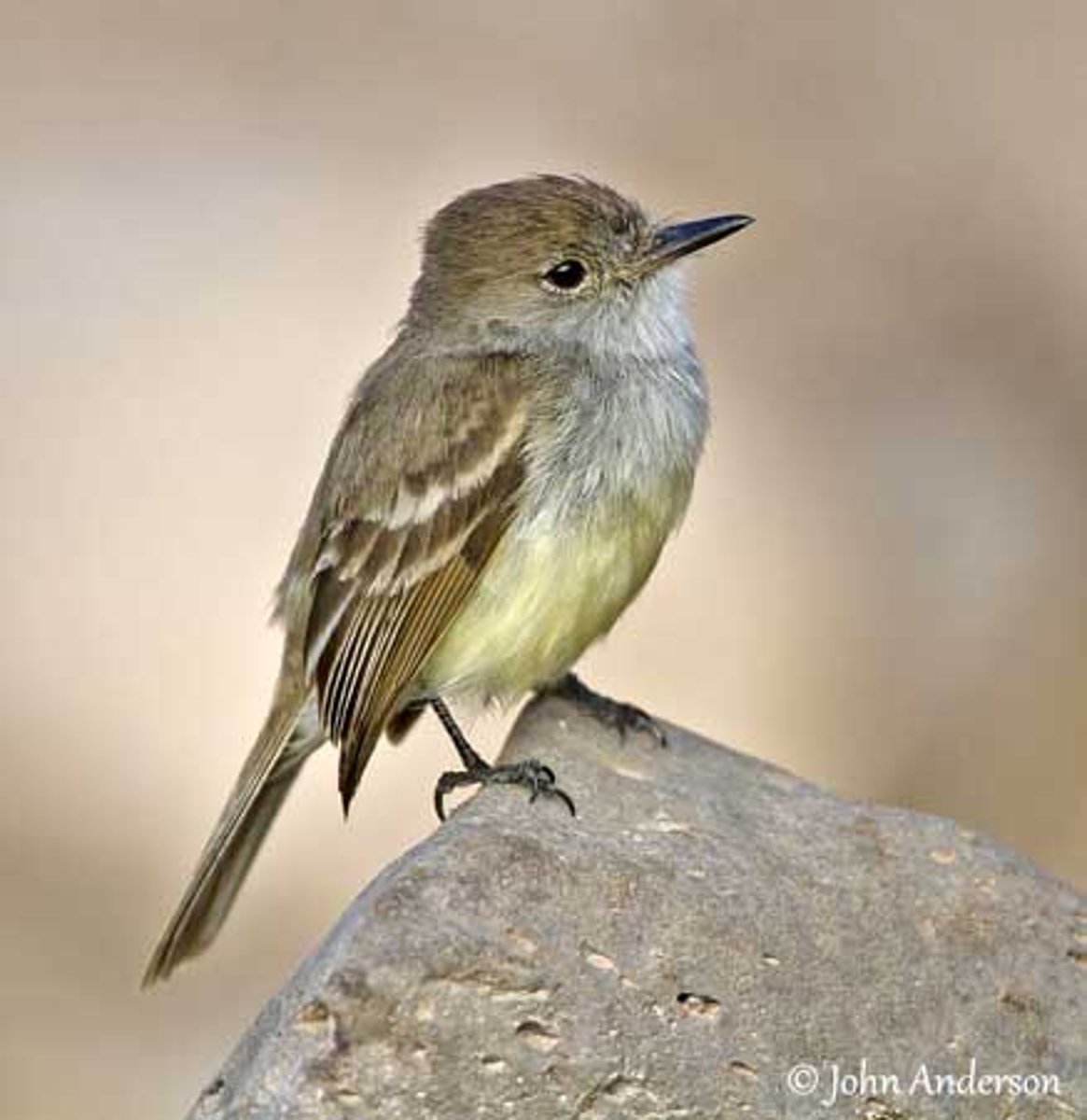
Mockingbird (Mimus)
- mentioned by Darwin
1) M. melanotis
2) M. trifasciatus (250-300 still alive)
3) M. macdonaldi (aggressive, larger bill than others)
4) M. parvulus (has several subspecies)
- Prey: scavangers, young finches, lava lizards, insects, centipedes,
and birds' eggs.
- prefer running over flying
Mockingbird (4 species - 3 facts)
- 1 Prey
- 2 Other
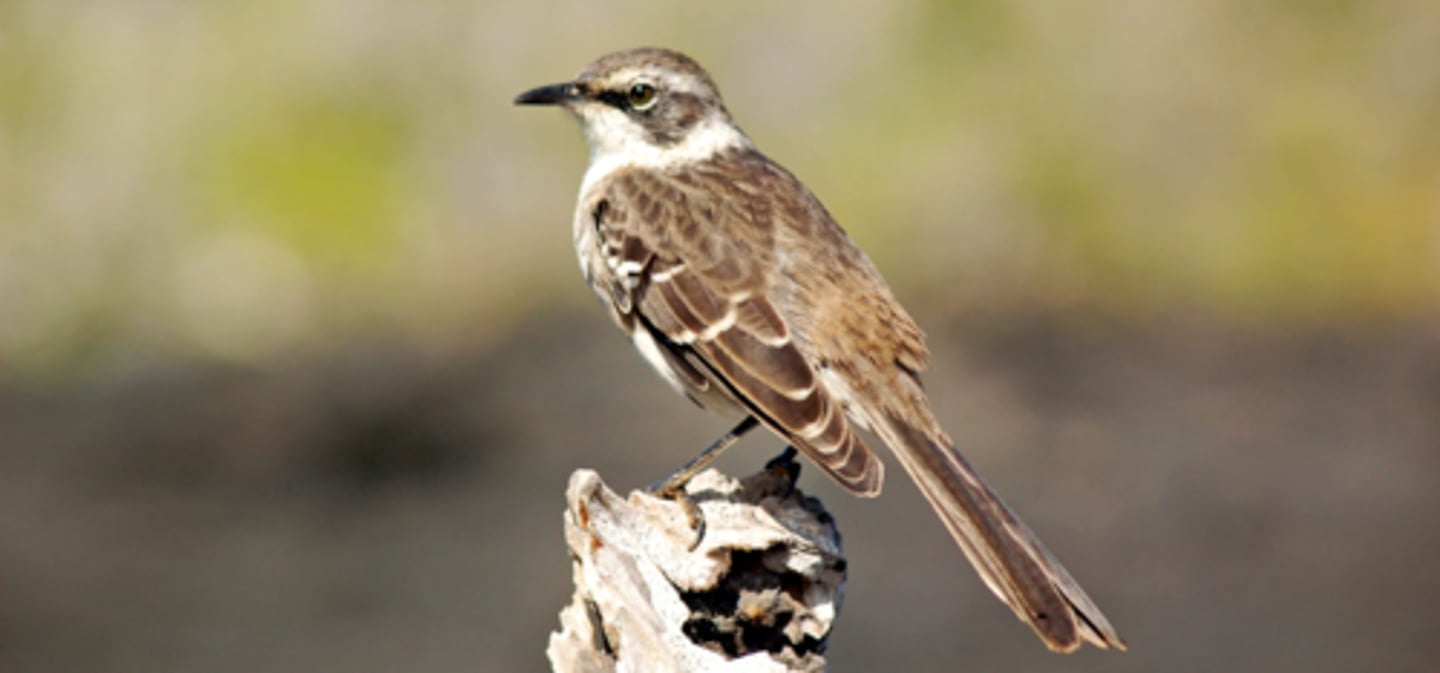
- 18 species, 17 in Galapagos (Cocos Finch (Pinaroloxias inornata) NOT there)
- example of adaptive radiation
- Darwin labeled poorly, Fitzroy & Covington did better
- all species from 1 introduction
- species determined by beak size, shape, and island origin
Darwin's Finches
1) all black = breeding
2) horn colored, partially or totally = non-breeding
3) yellow lower mandible = juvenile
4) whitish lower mandible = fledgling
Finch Beak Color
- freckle/gray female juveniles
- dark gray immature males
- all black mature males
1) Large Ground Finch (Geospiza magnirostris)
- largest ground finch, stupid big beak, crack large seeds
2) Medium Ground Finch (Geospiza fortis)
- heavy beak, but more pointed than large
- feeds on seeds and ectoparasites of reptiles
3) Small Ground Finch - (Geospiza fuliginosa)
- short stubby beak
- Feeds on small seeds and ectoparasites of reptiles.
Ground Finches (3)
Cactus Finch (Geospiza scandens)
- Longer, more downward-curved beak than other ground
finches.
Cactus Finches
Sharp-beaked Ground Finch (Geospiza difficilus)
Sharp-beaked Ground Finch
Vampire Finch (Geospiza septentrionalis)
- vulnerable = numbers low
- picks at until bleeding then drinks blood
Vampire Finch
Large Cactus Ground Finch (Geospiza conirostris)
Large Cactus Ground Finch
Genovesa Cactus Finch (Geospiza propinqua)
Genovesa Cactus Finch
Genovesa Ground Finch (Geospiza acutirostris)
Genovesa Ground Finch
Tree Finches - Platyspiza and Camarhynchus
- plumage color beige for both sexes at juvenile and adult
- older males black face/hood (except woodpecker)
1) Large Tree Finch (Camarhynchus psittacula)
- vulnerable
2) Medium Tree Finch (Camarhynchus pauper)
- critically endangered
3) Small Tree Finch (Camarhynchus parvulus)
- smallest of tree finches
4) Woodpecker Finch (Camarhynchus pallidus)
- Large, elongated beak that curves downward at
the end
- uses tool to dig larvae out of tree
5) Mangrove Finch (Camarhynchus heliobates)
- Most endangered of all finch species
- sometimes uses tools
6) Vegetarian Finch (Platyspiza crassirostris)
- one of largest finches
- Beak is sort, deep, and broad.
Tree Finches (6)
Grey Warbler Finch (Certhidea fusca)
- Plumage color is pale beige in all stages
Grey Warbler Finch
Green Warbler Finch (Certhidea olivacea)
- Plumage color is pale beige in all stages
Green Warbler Finch